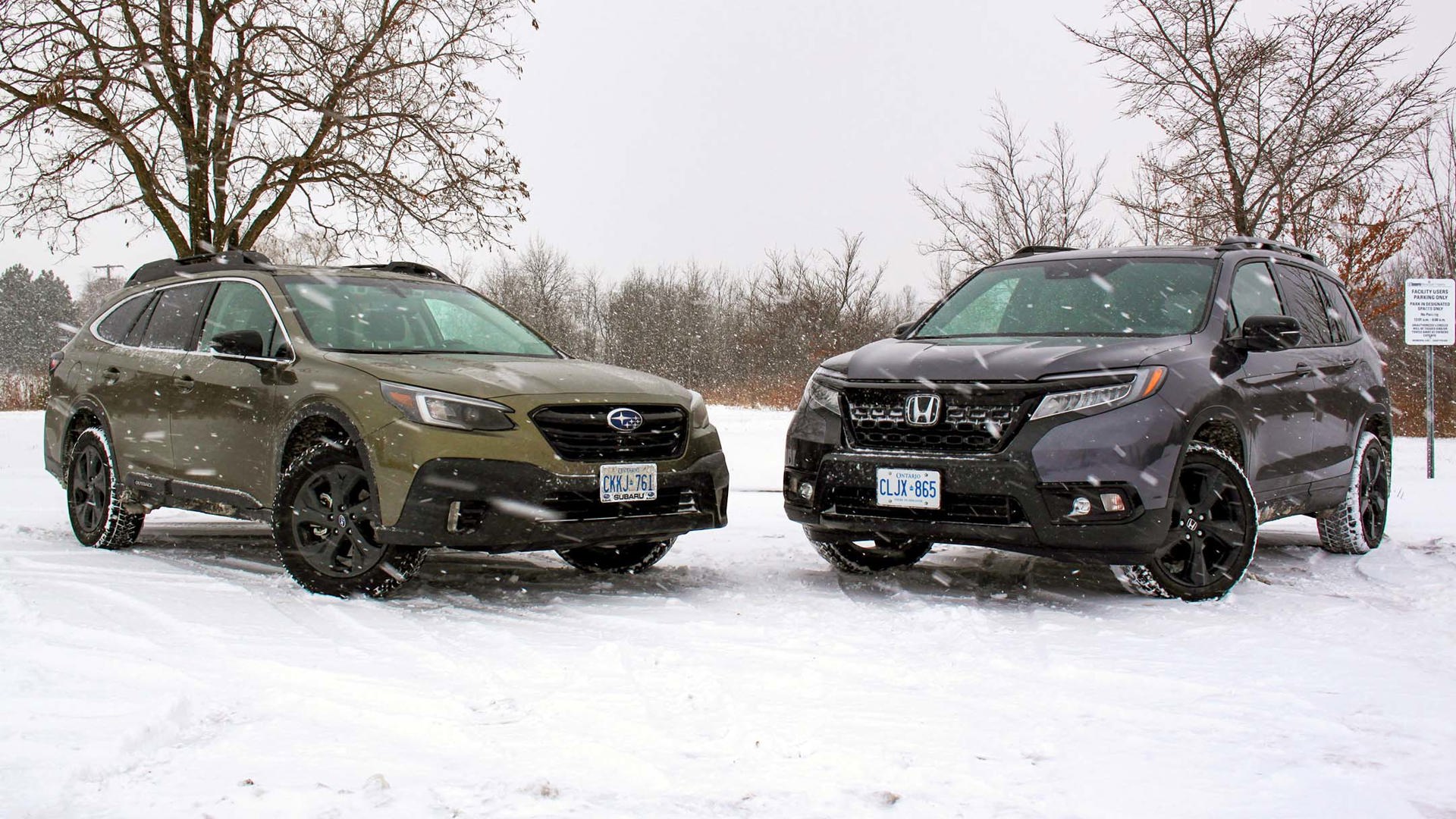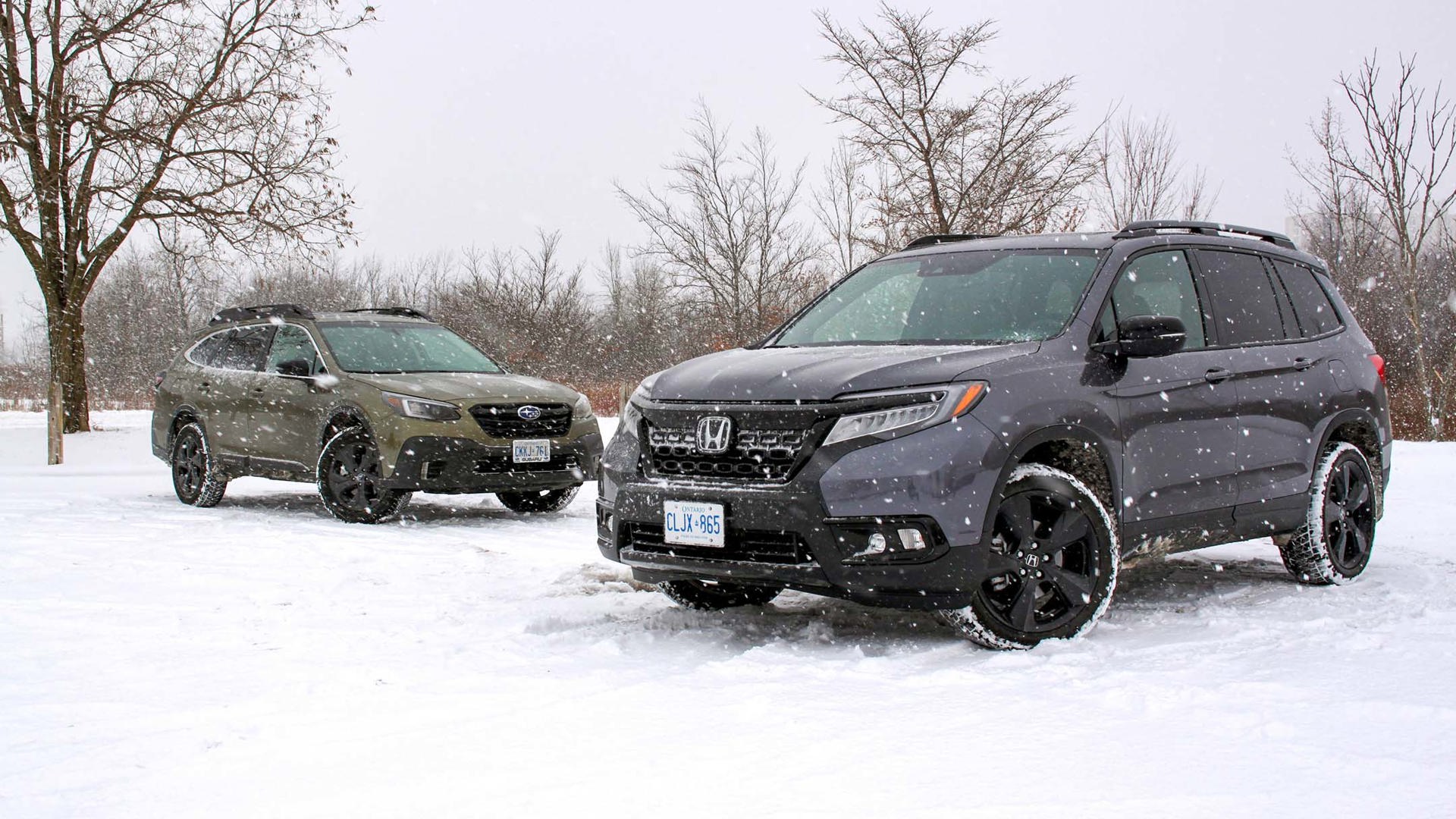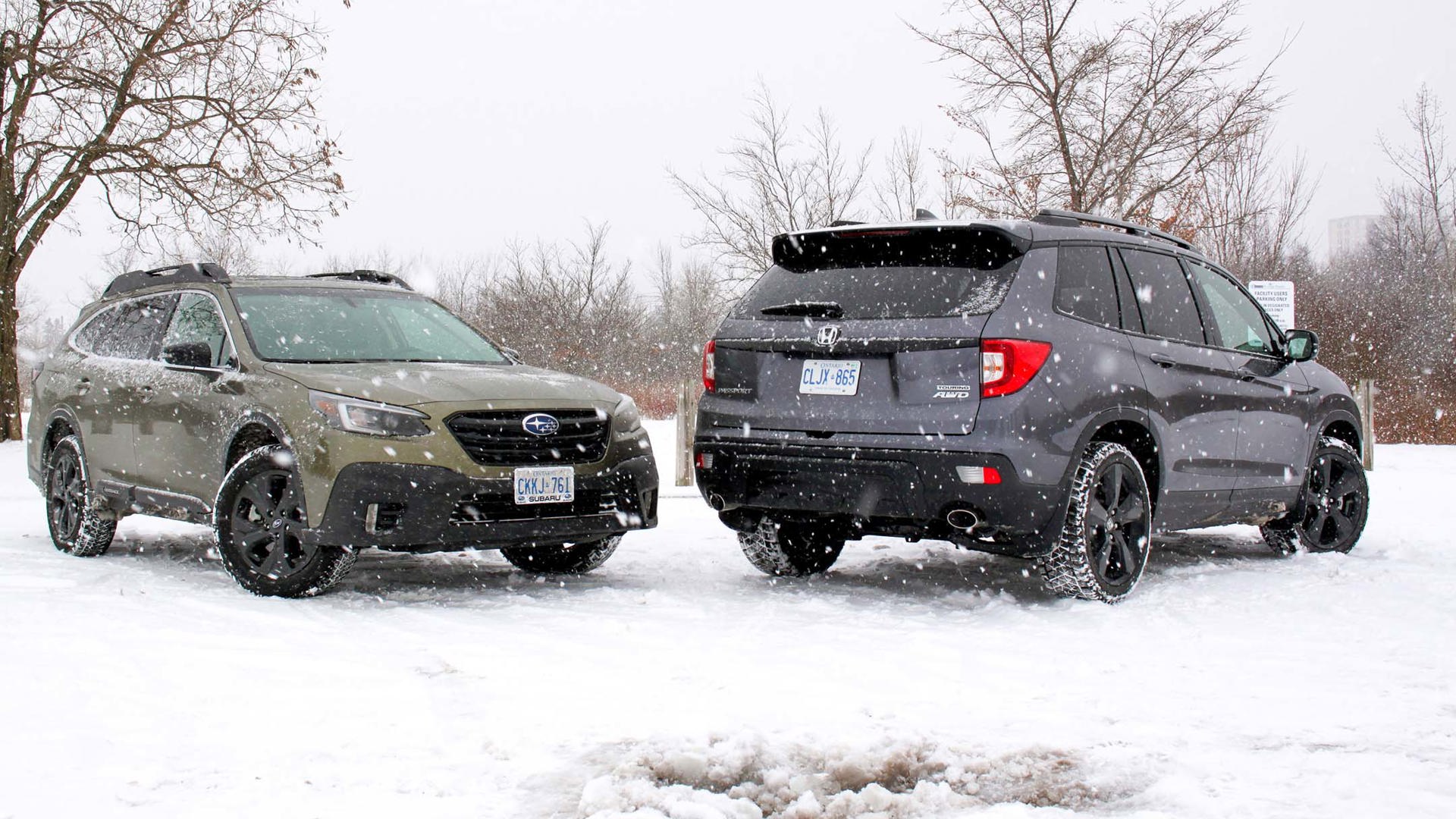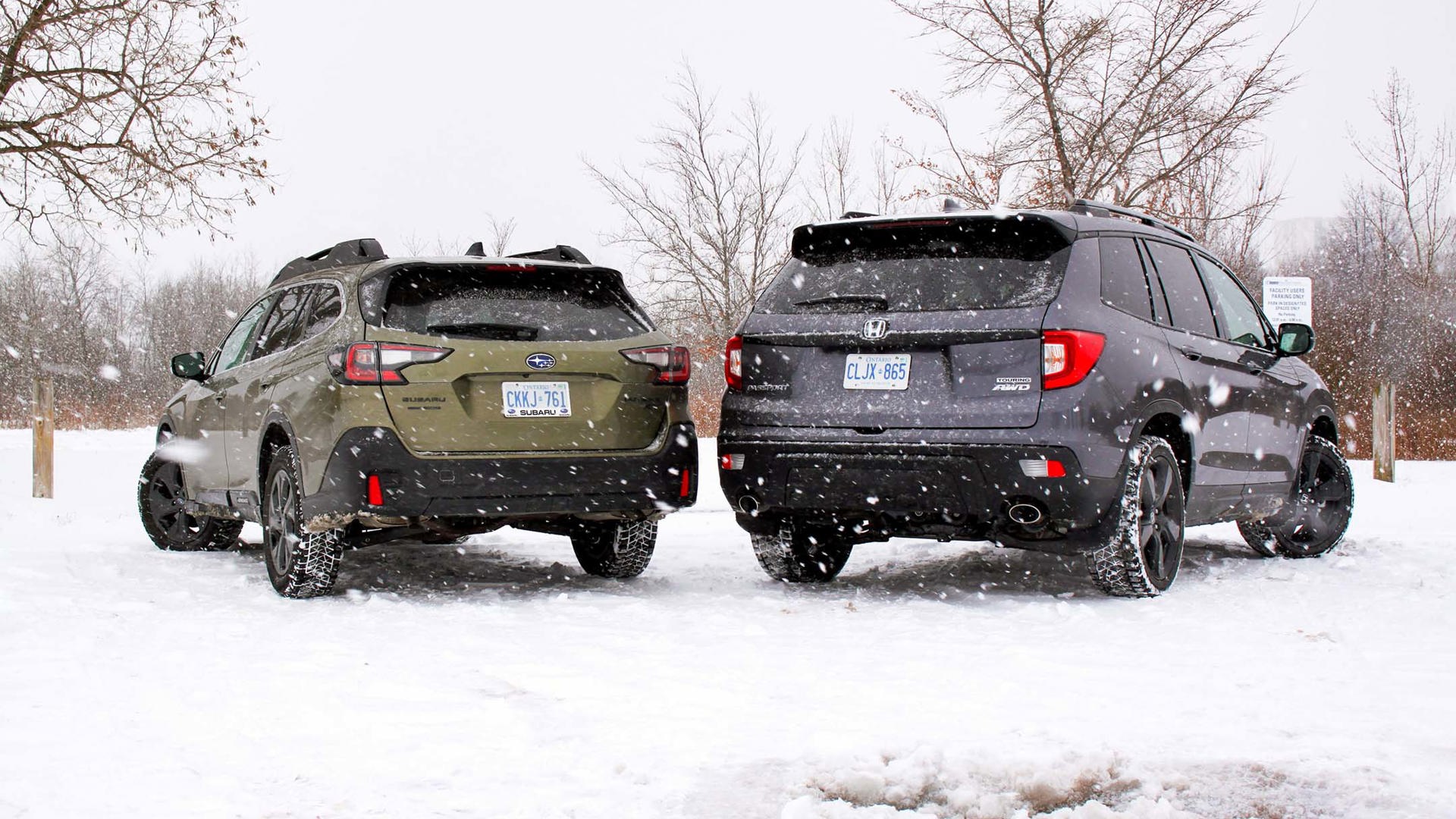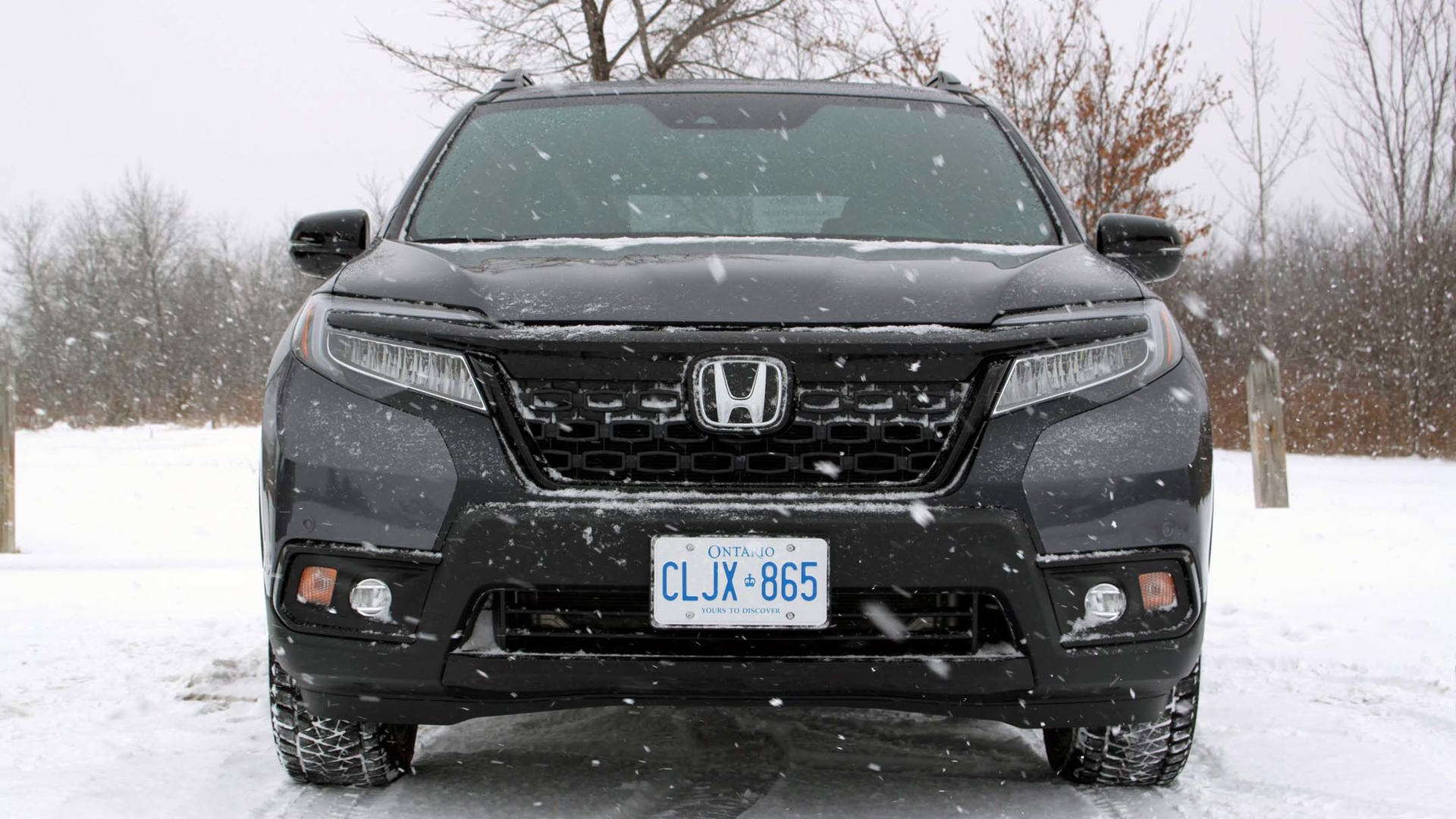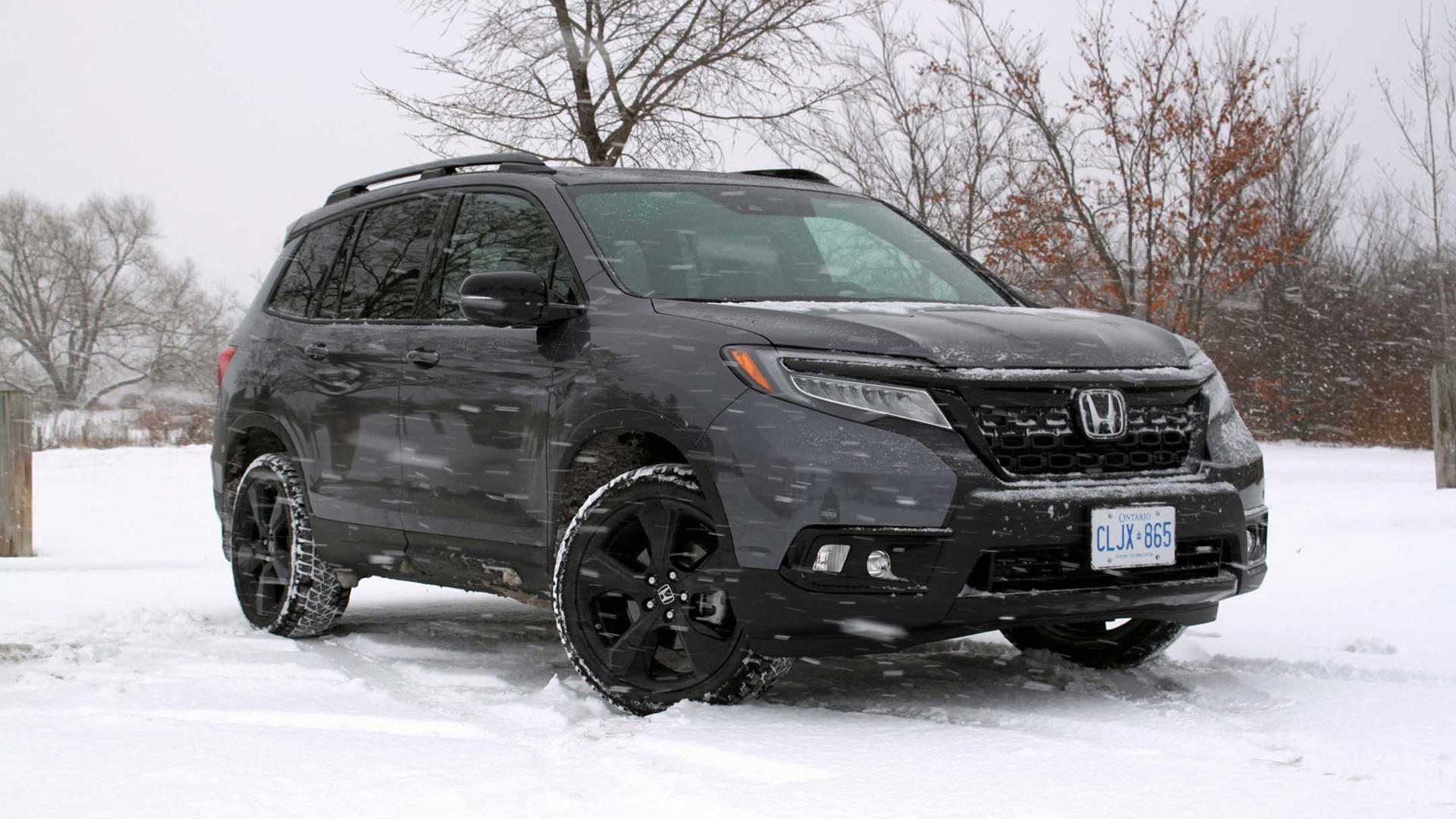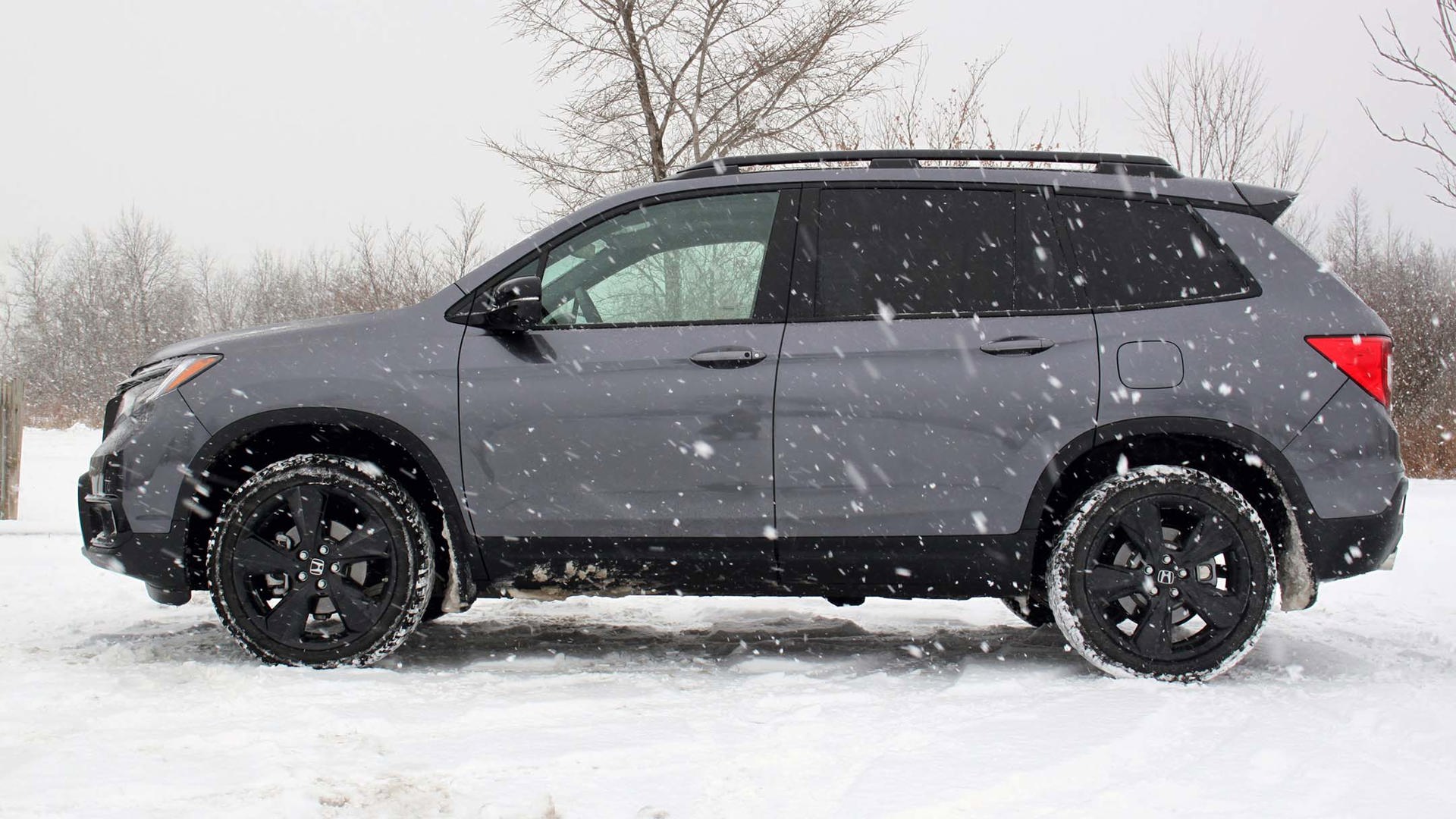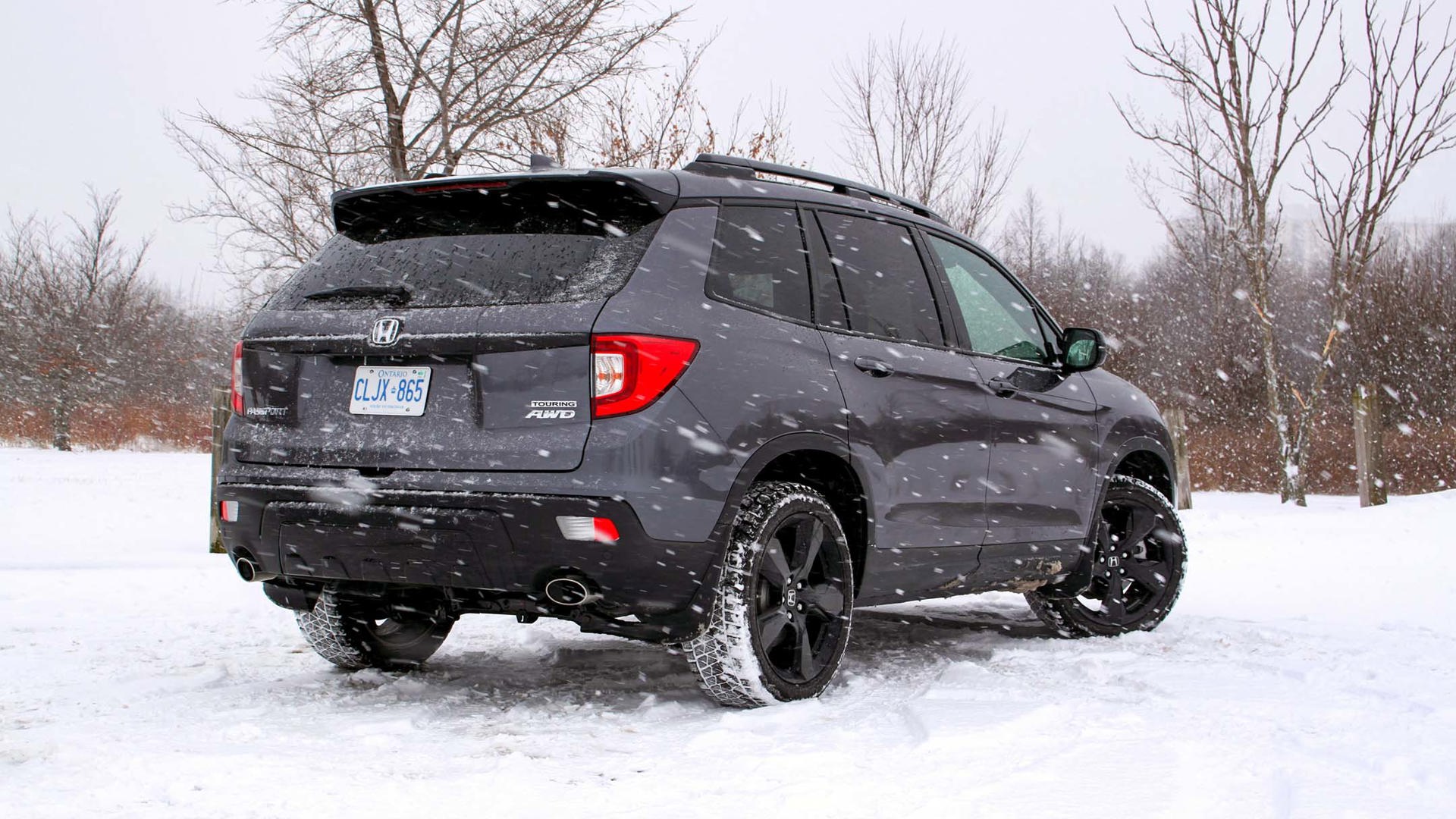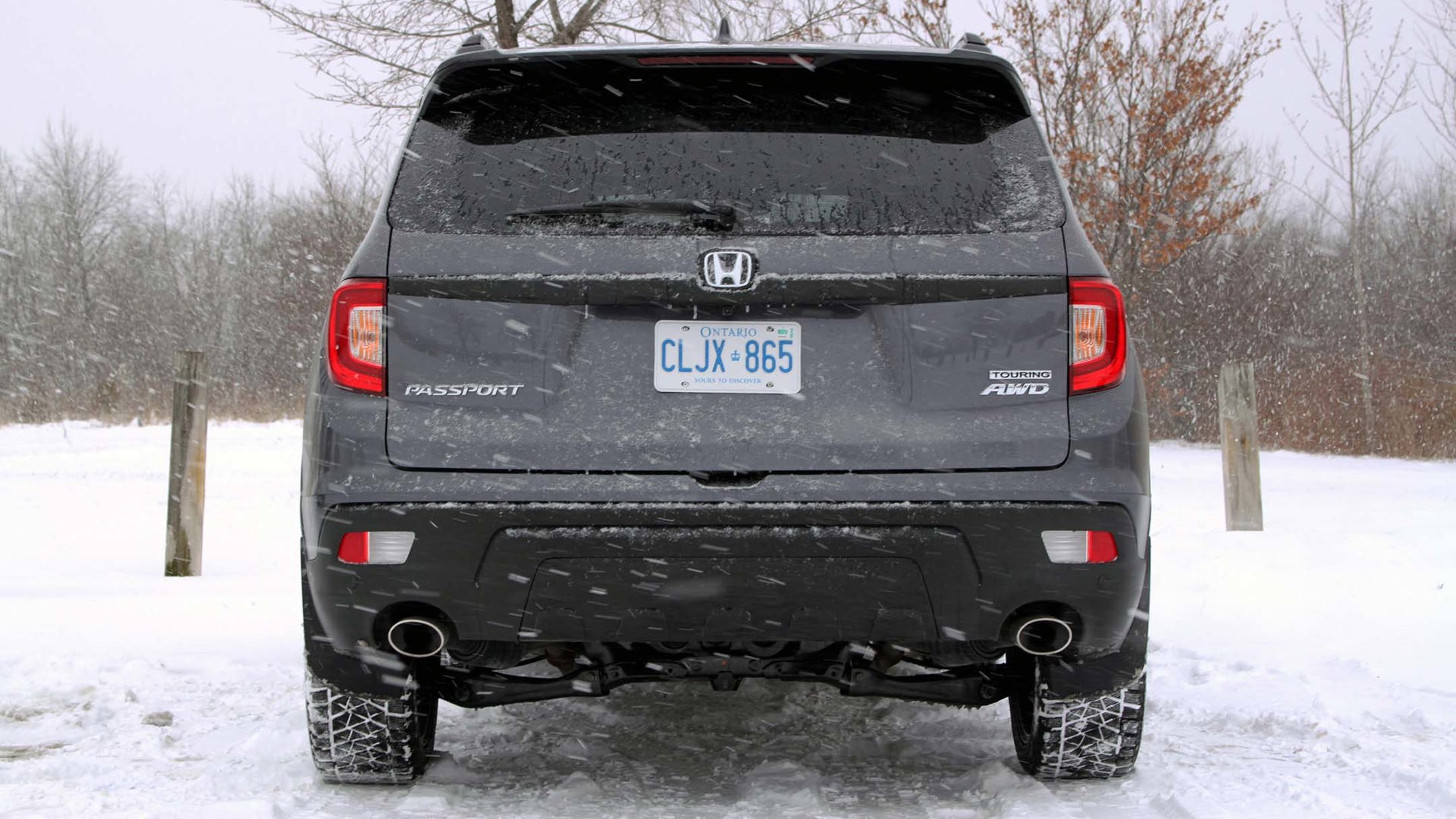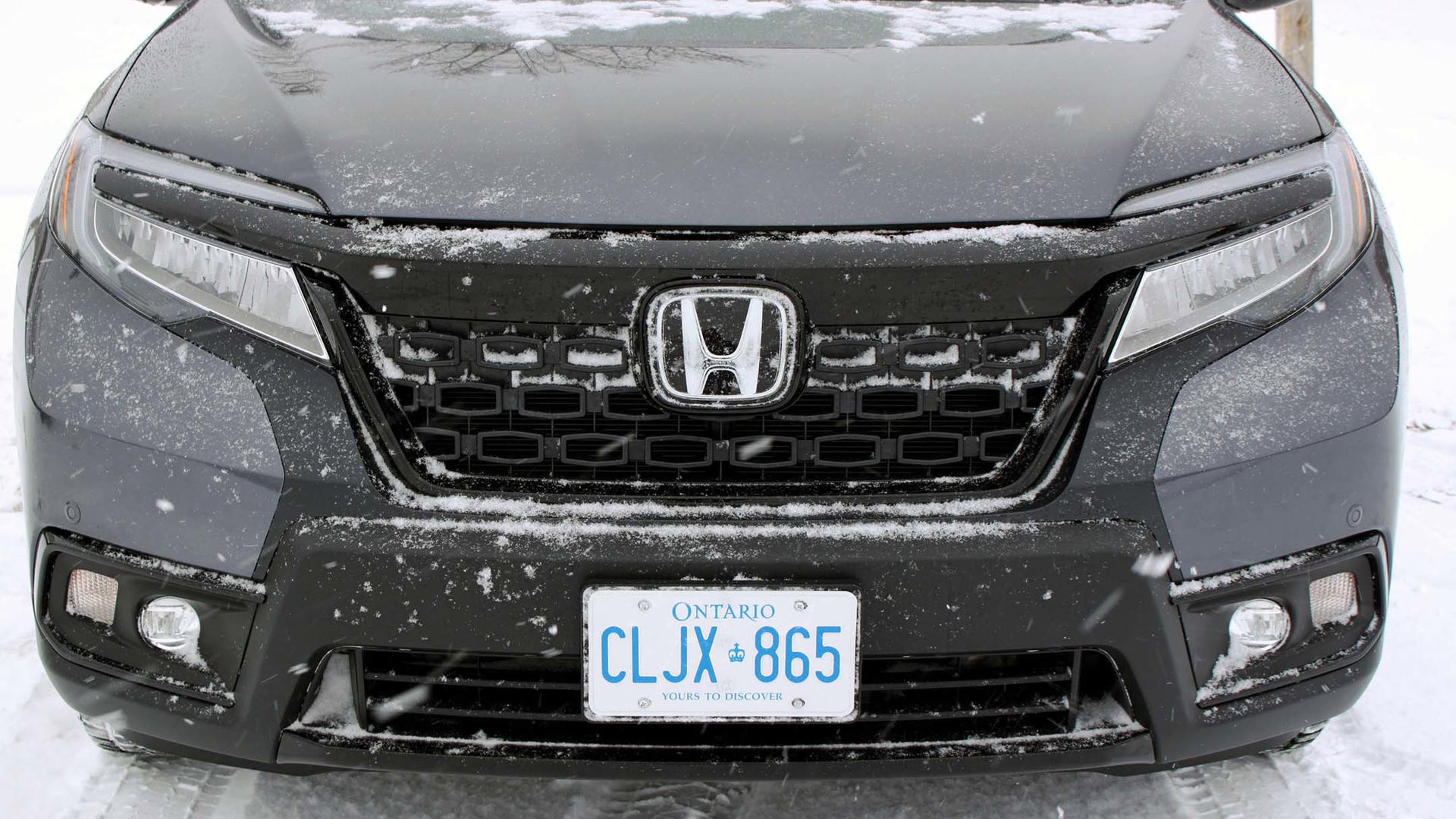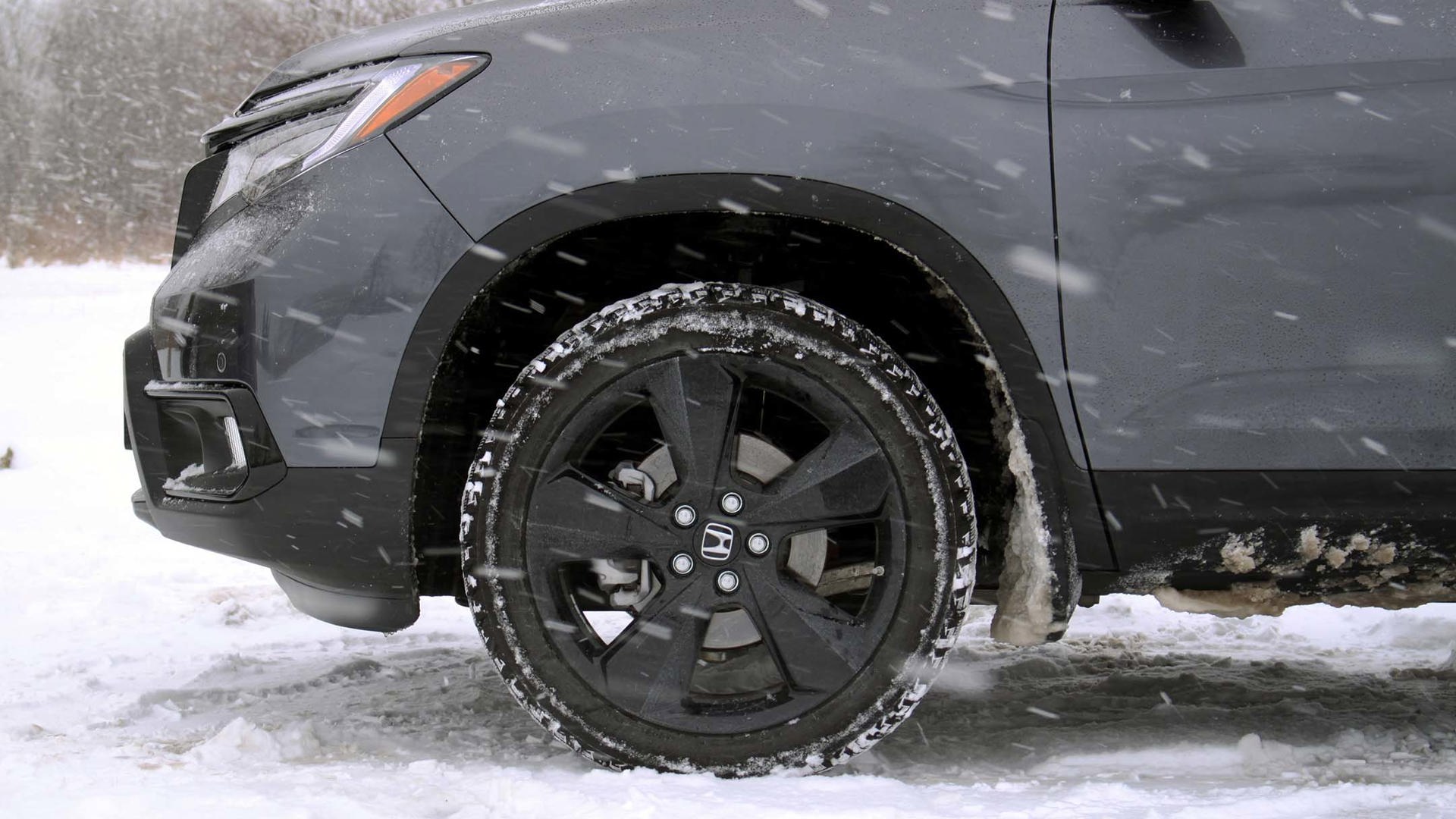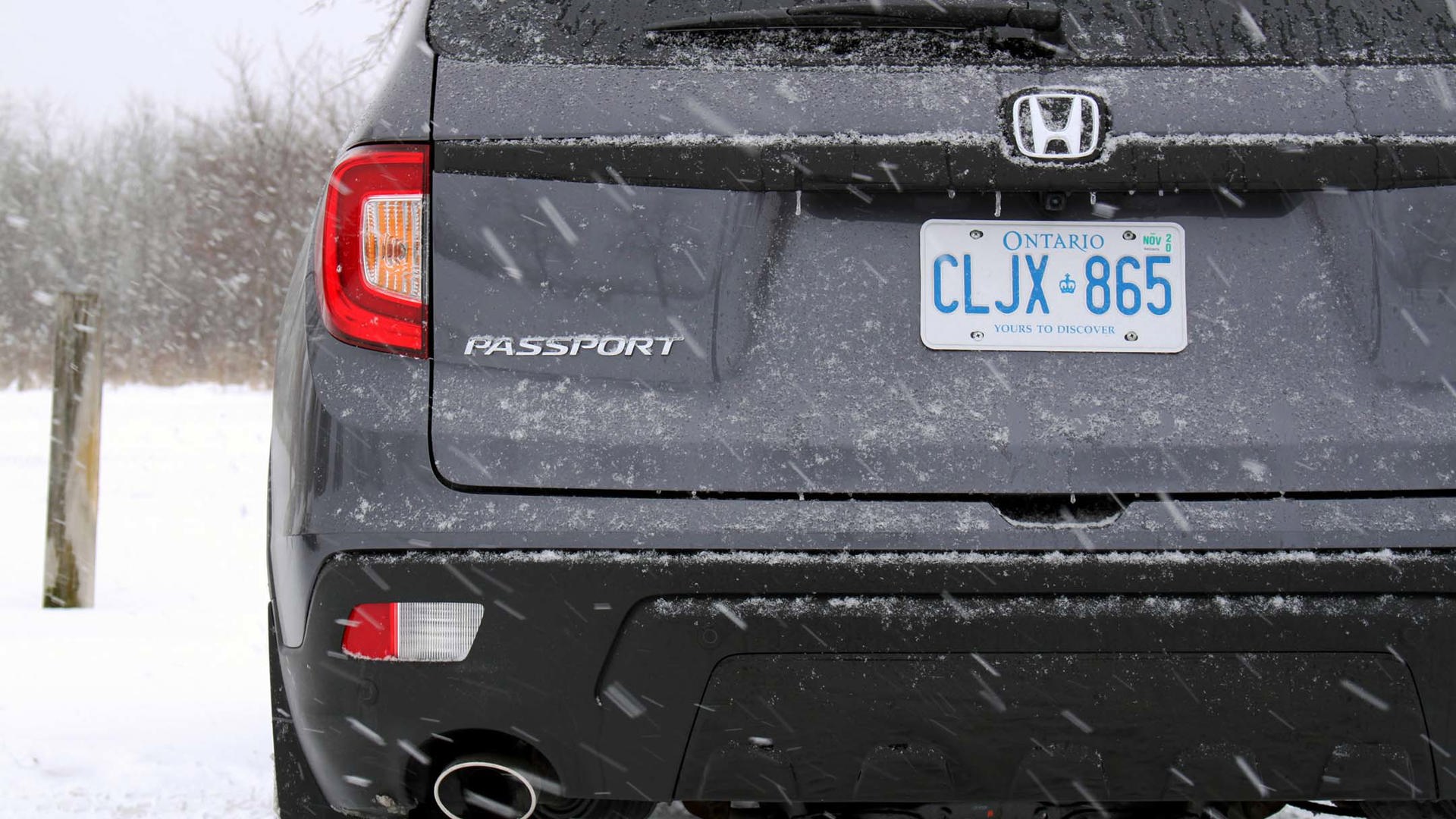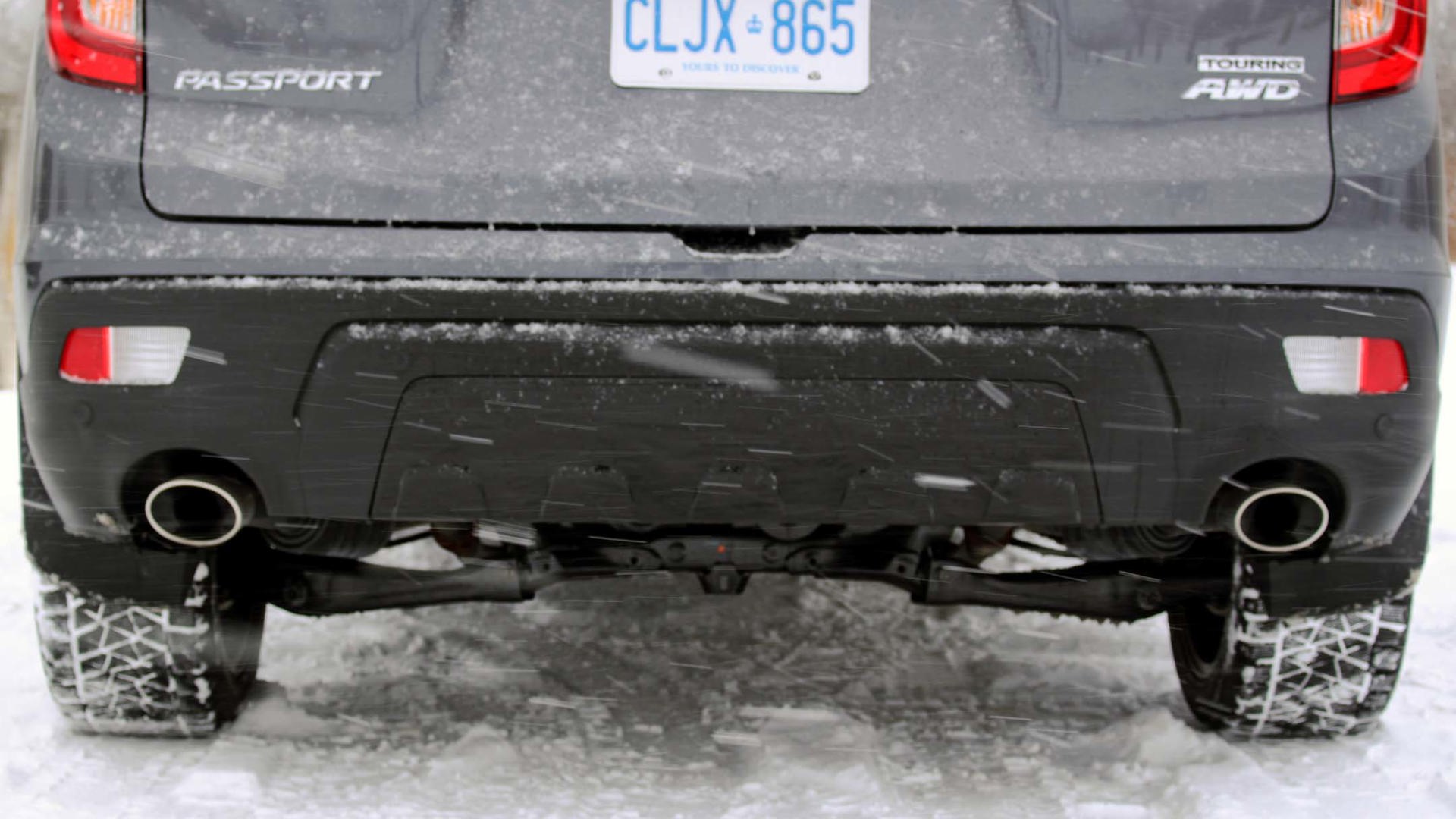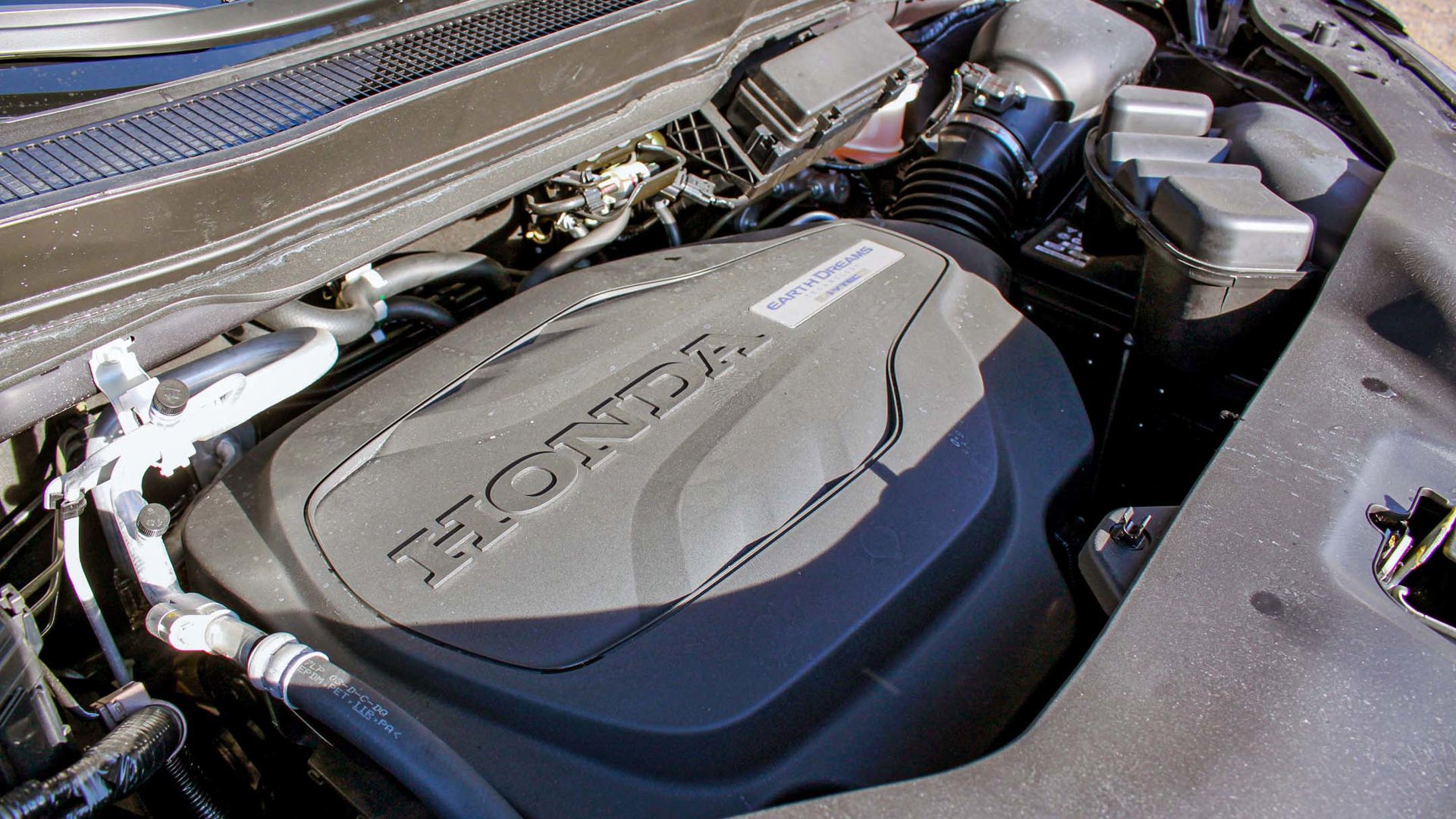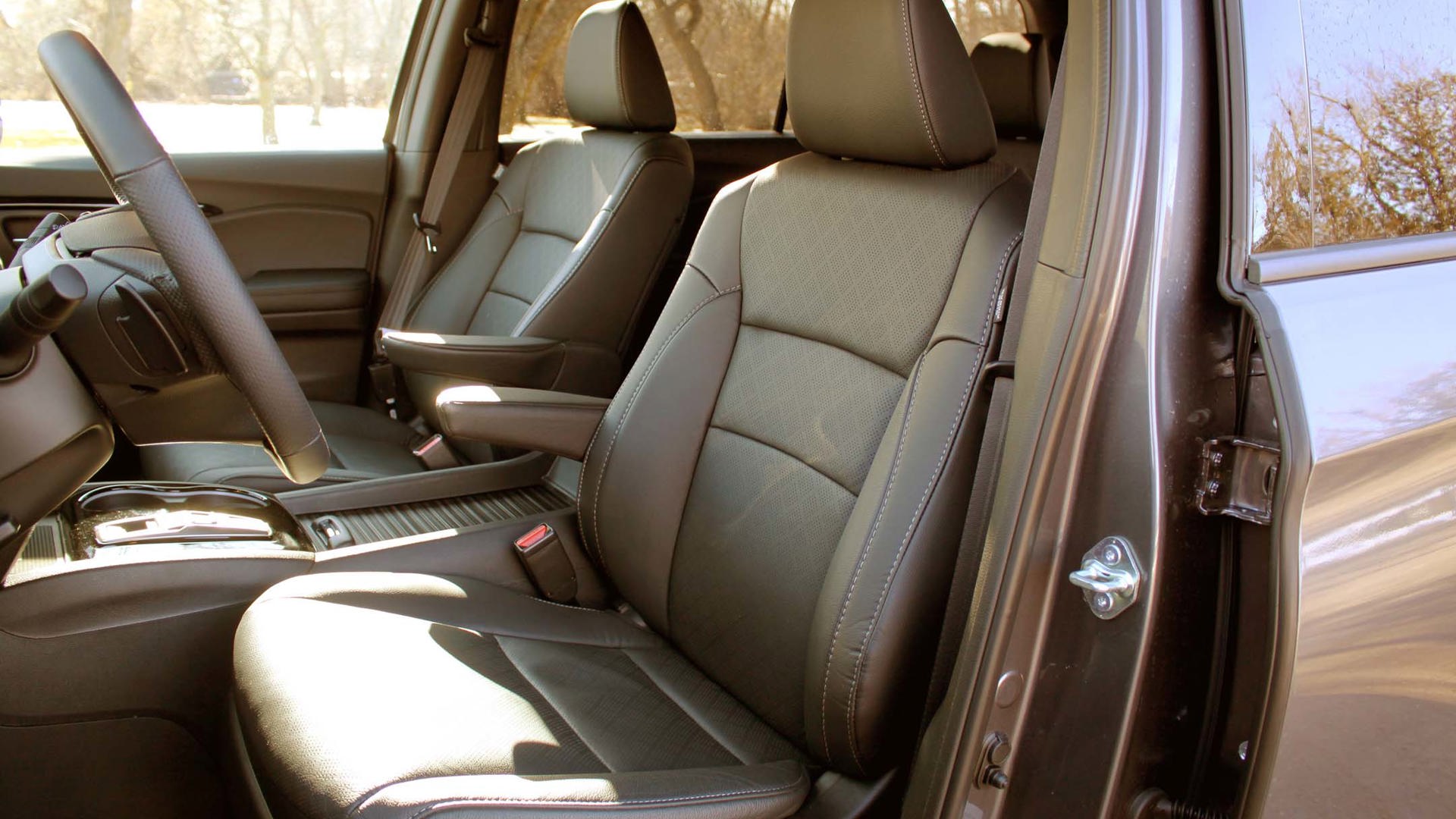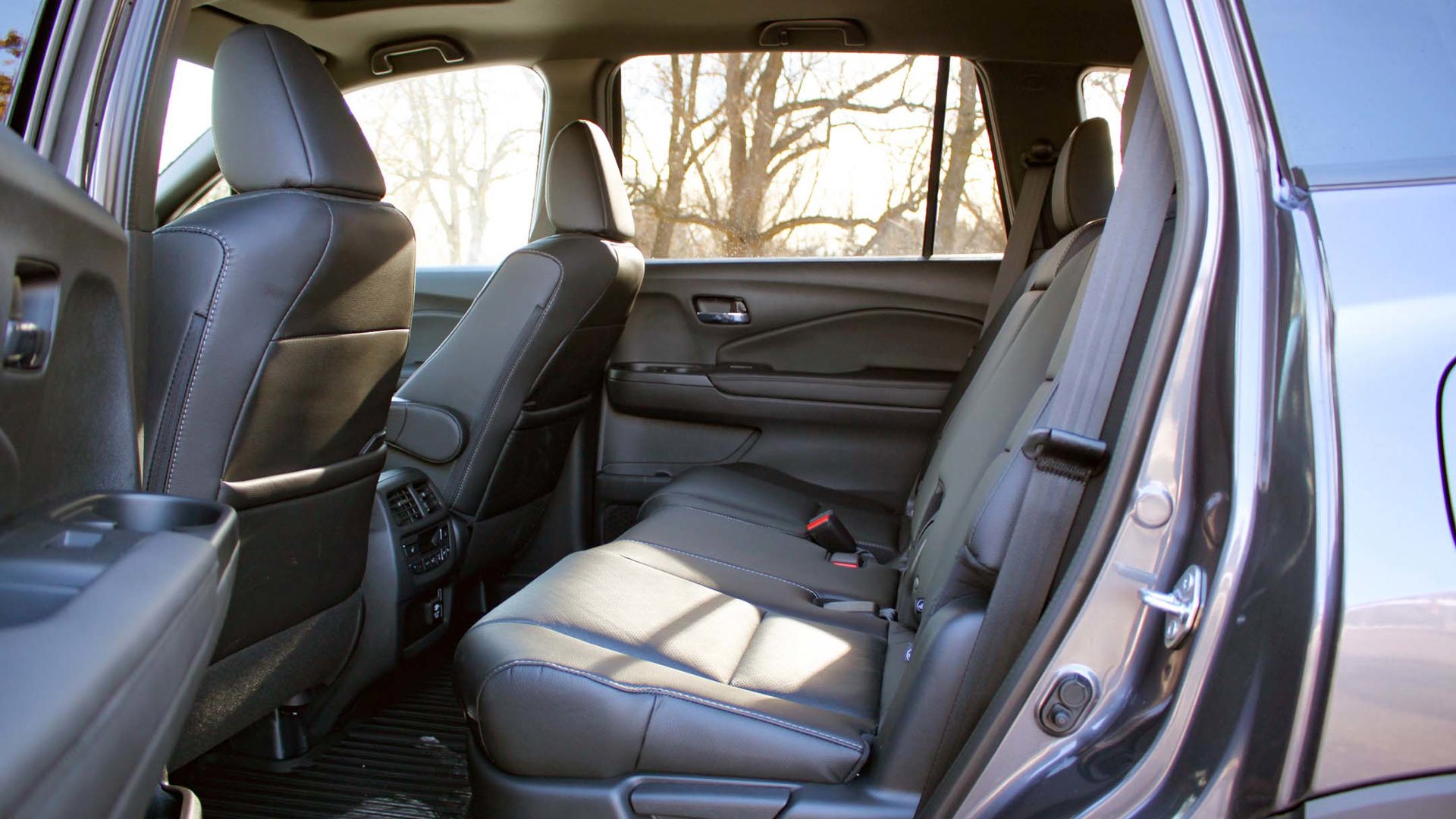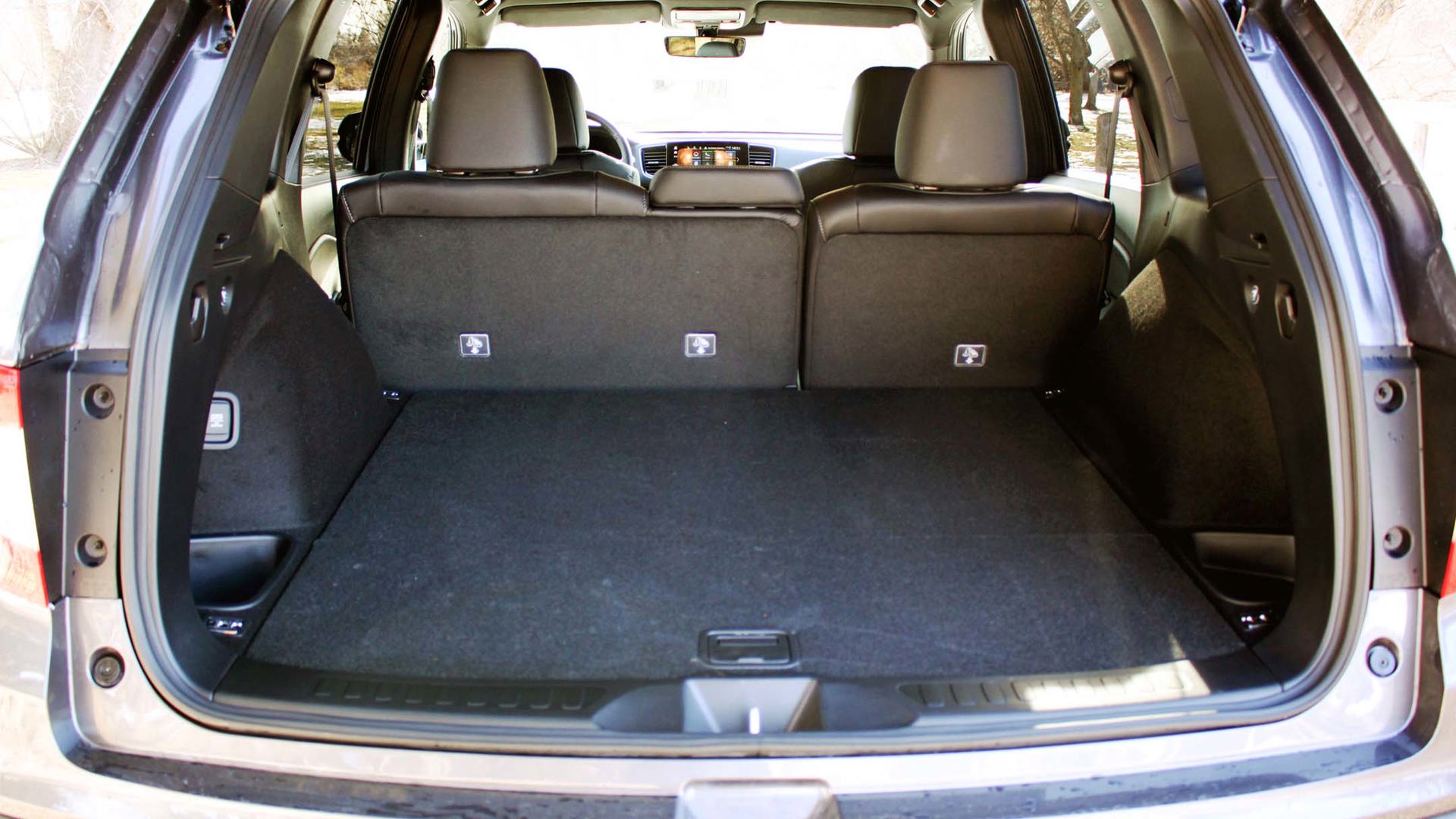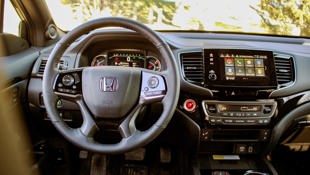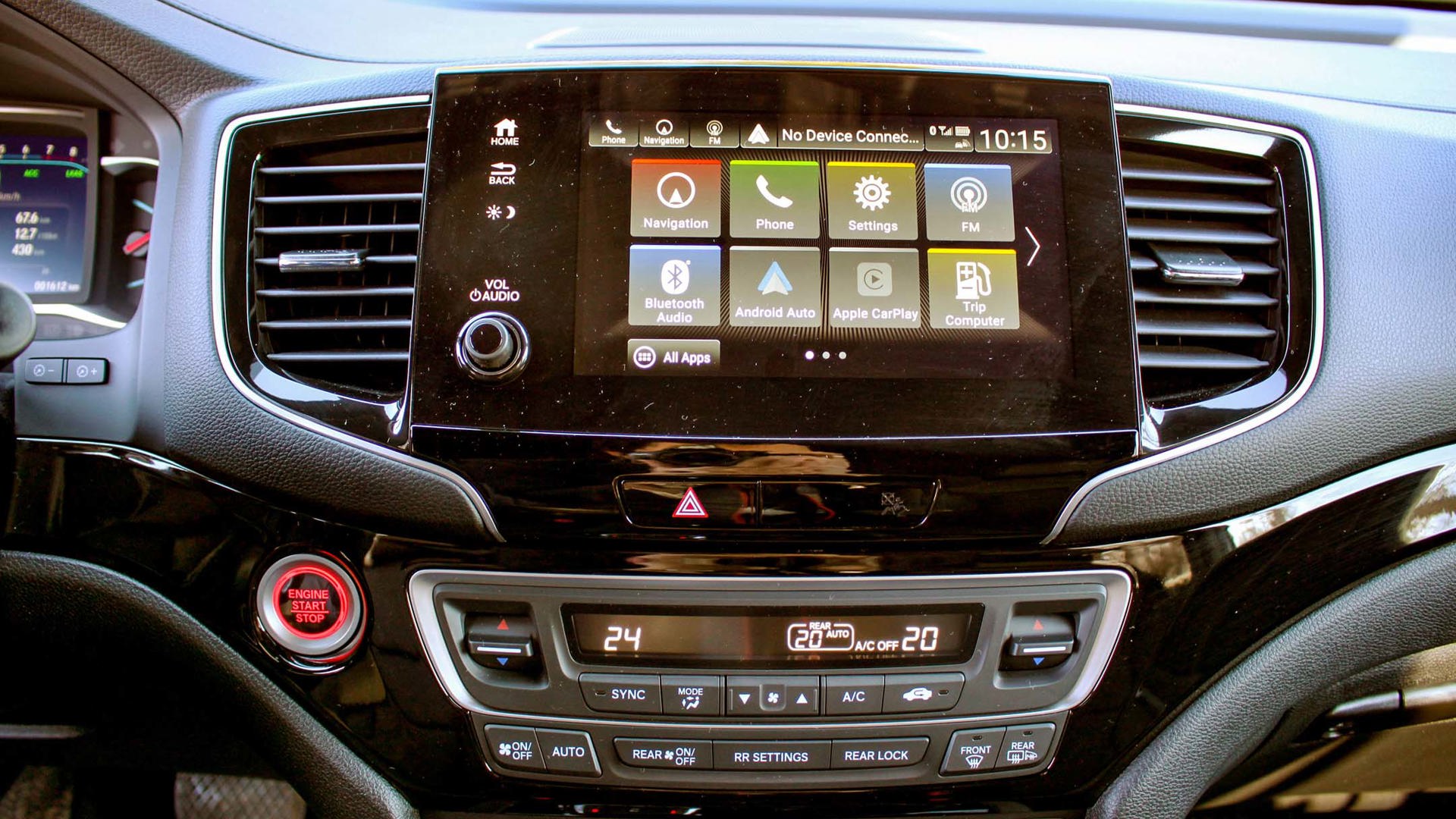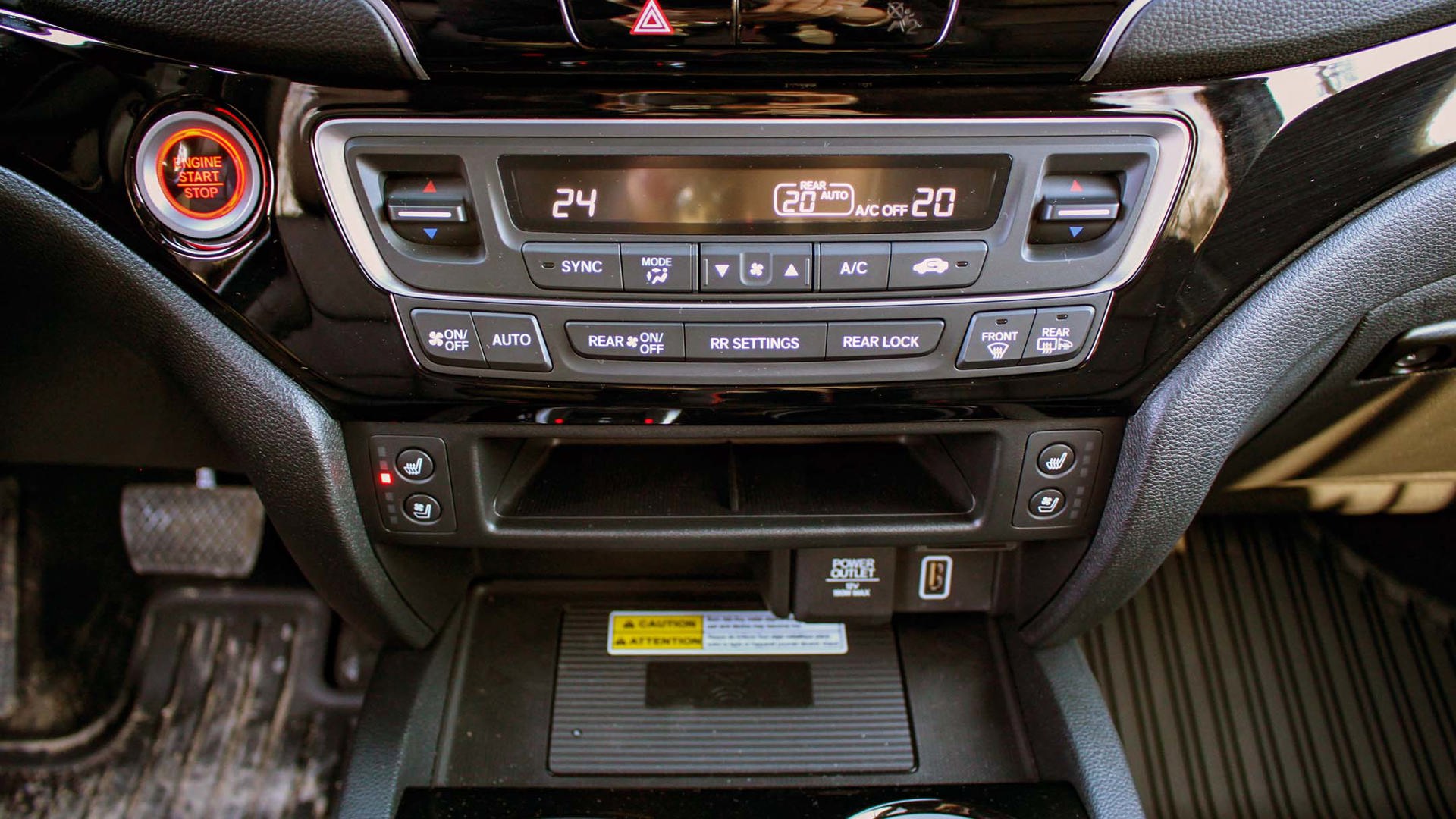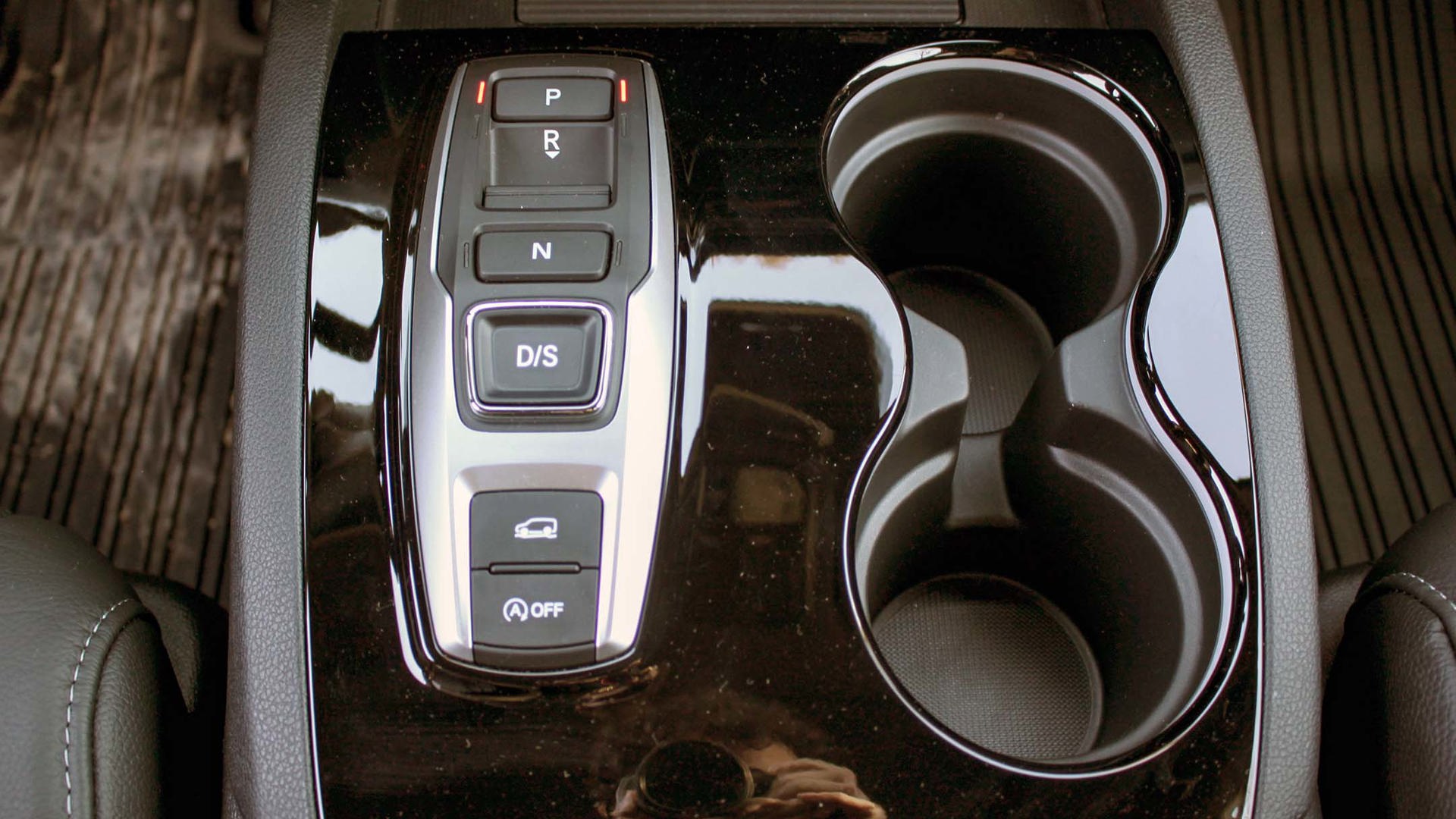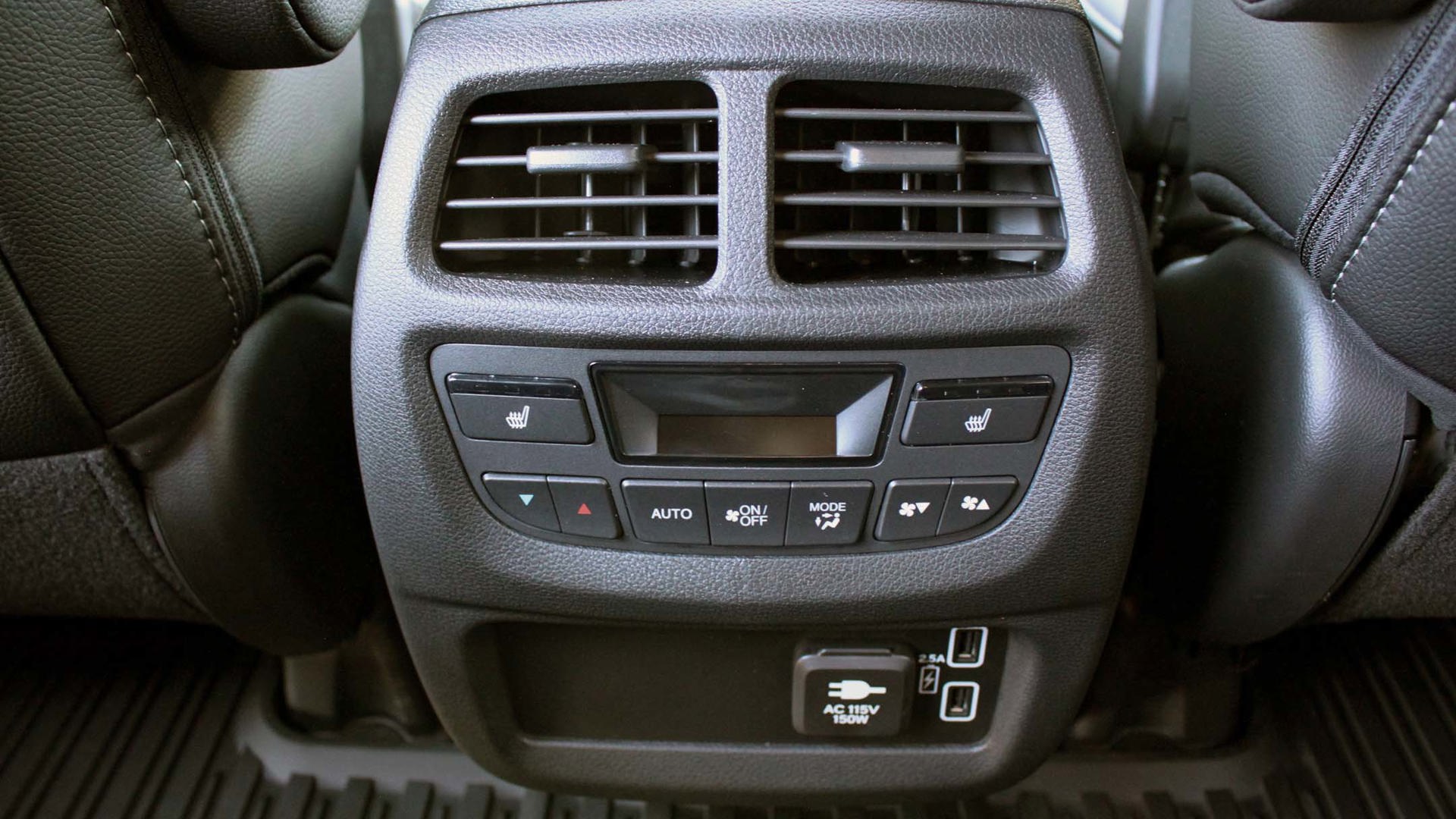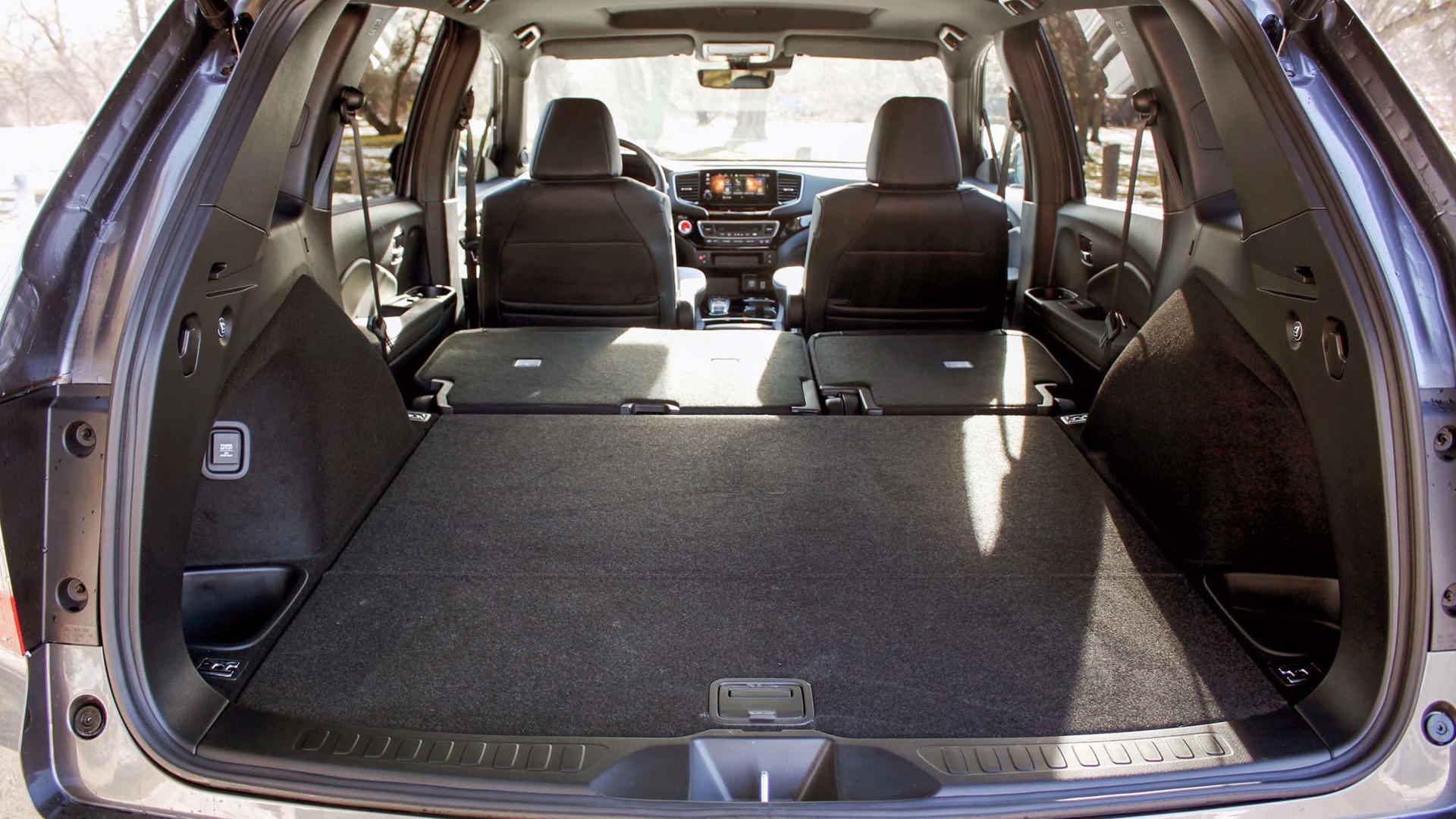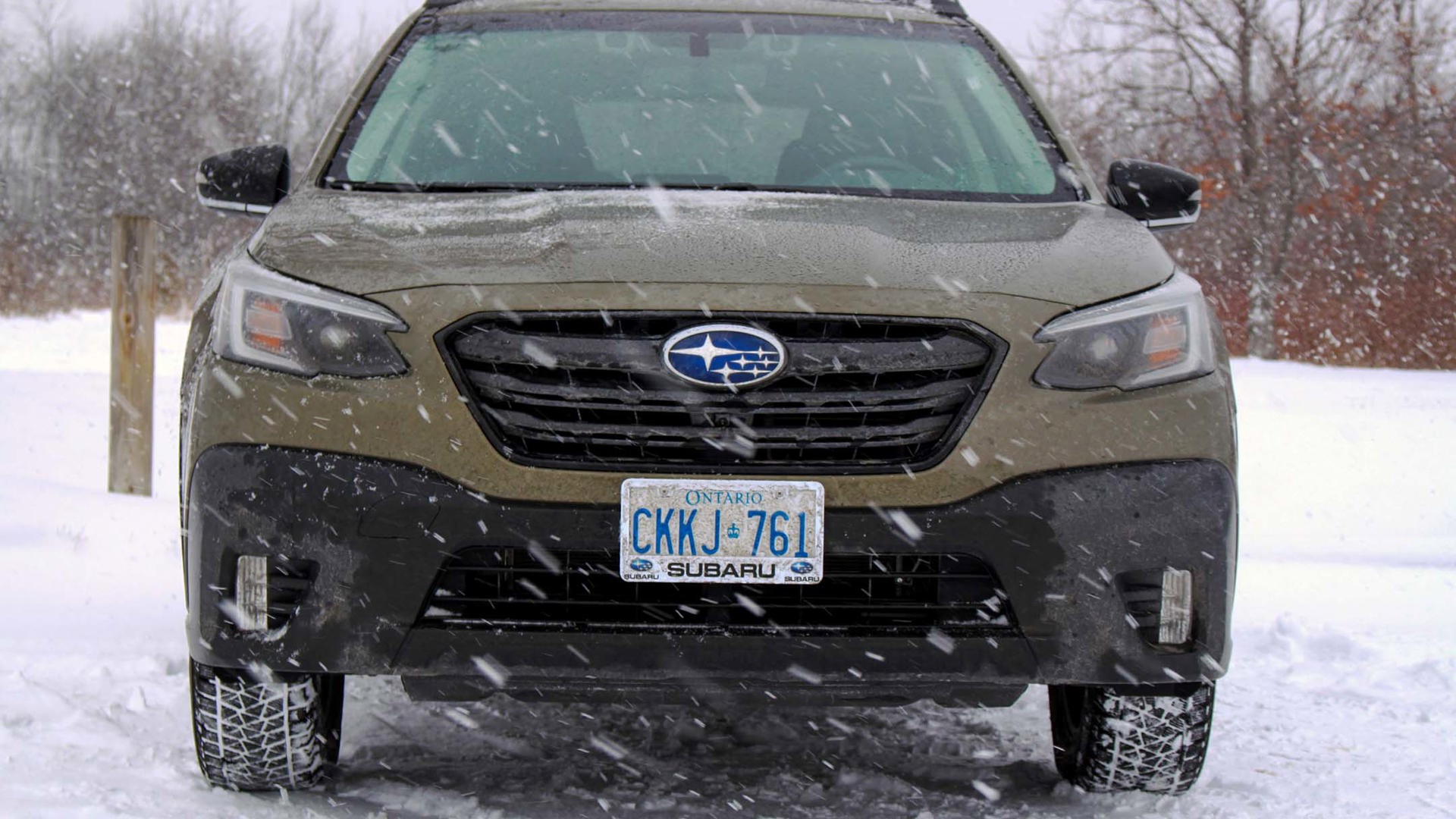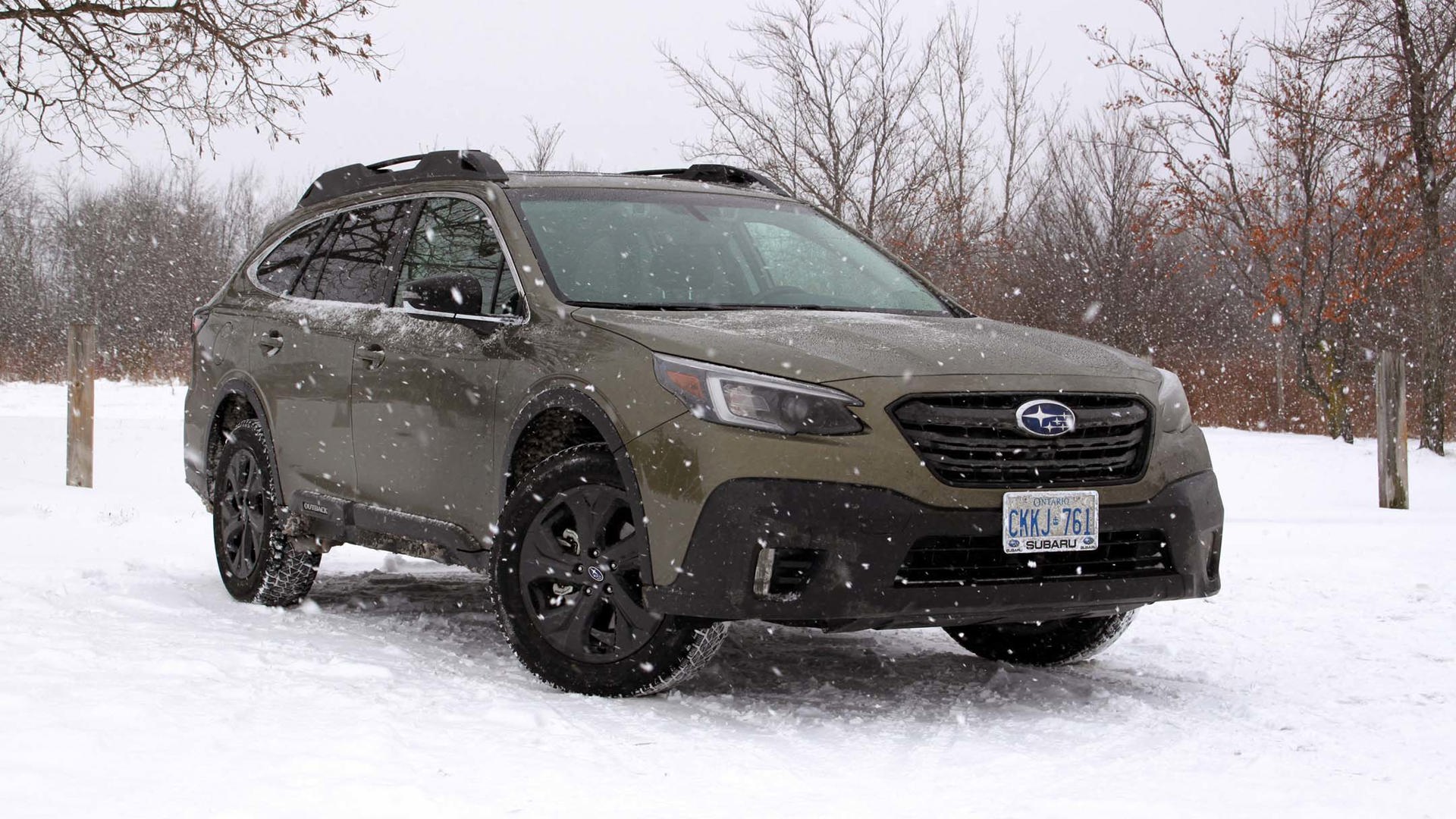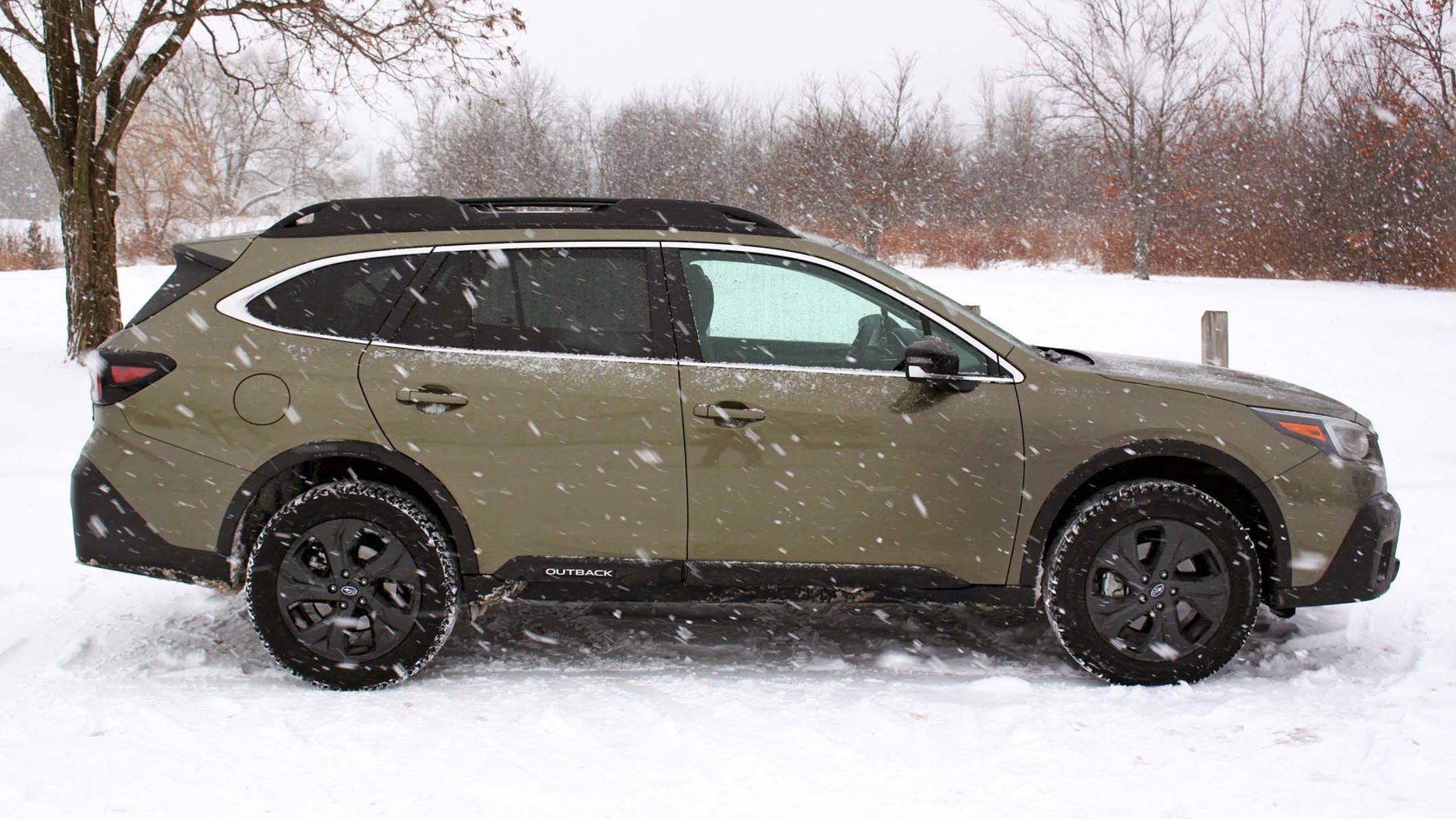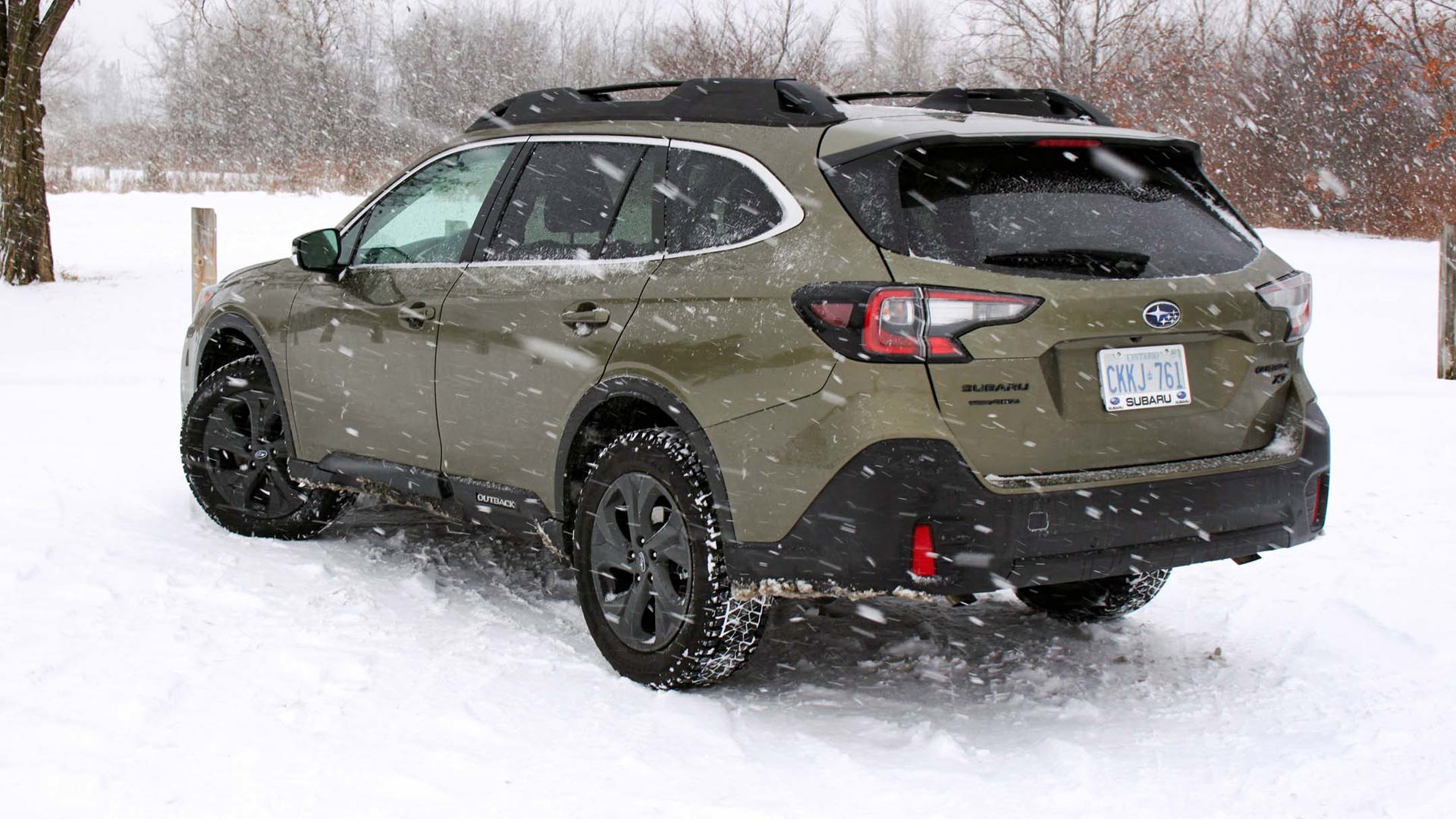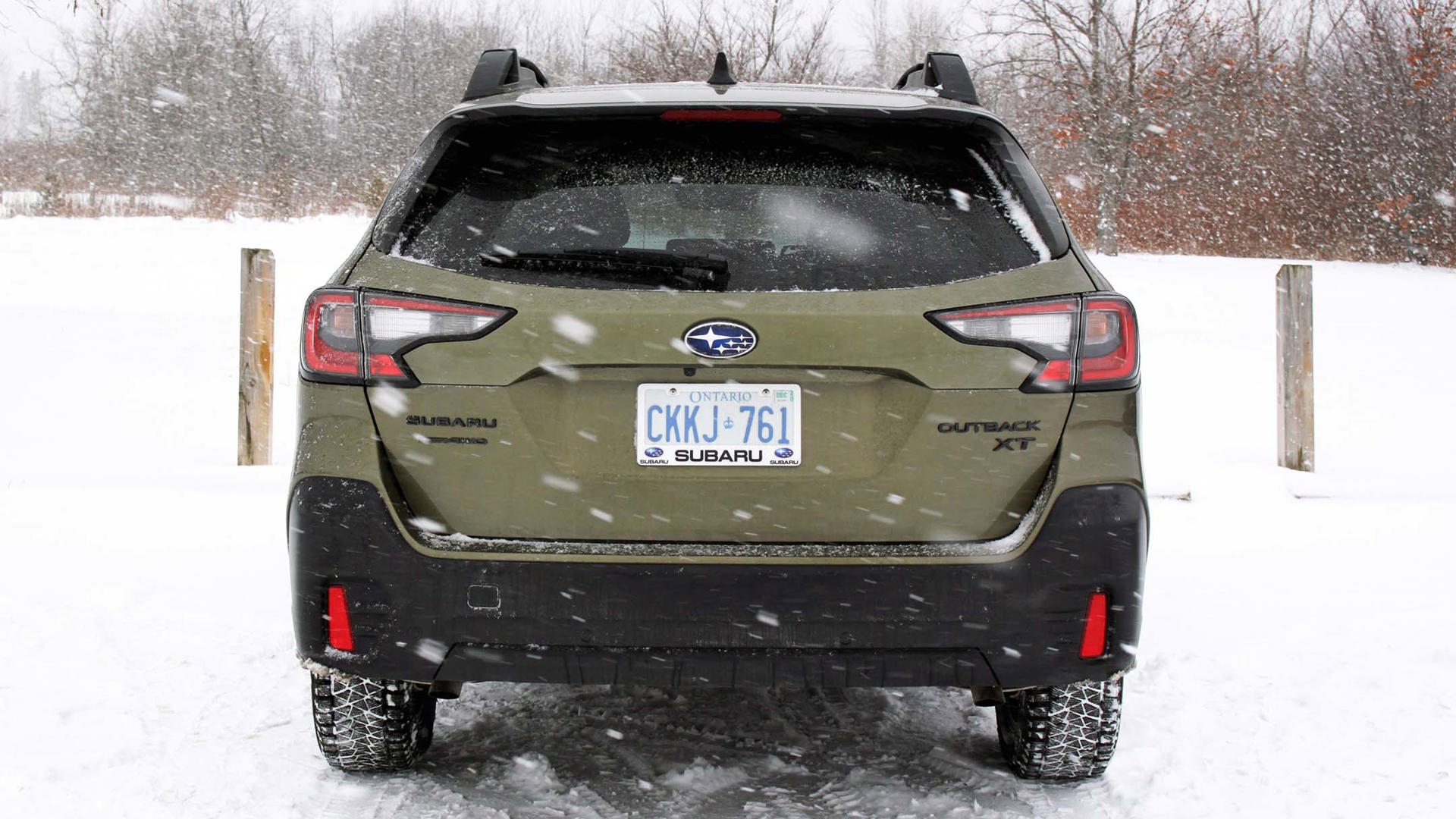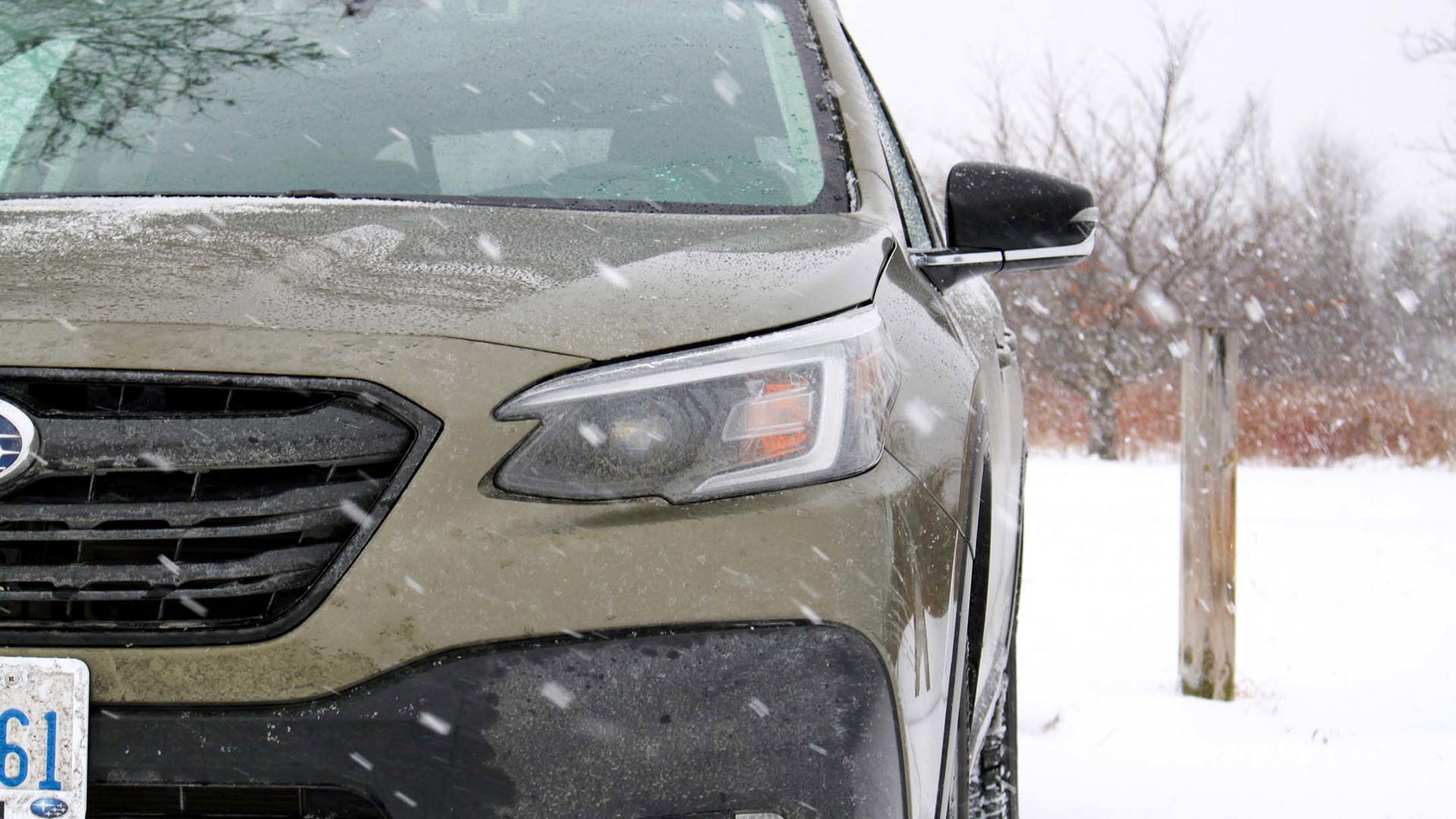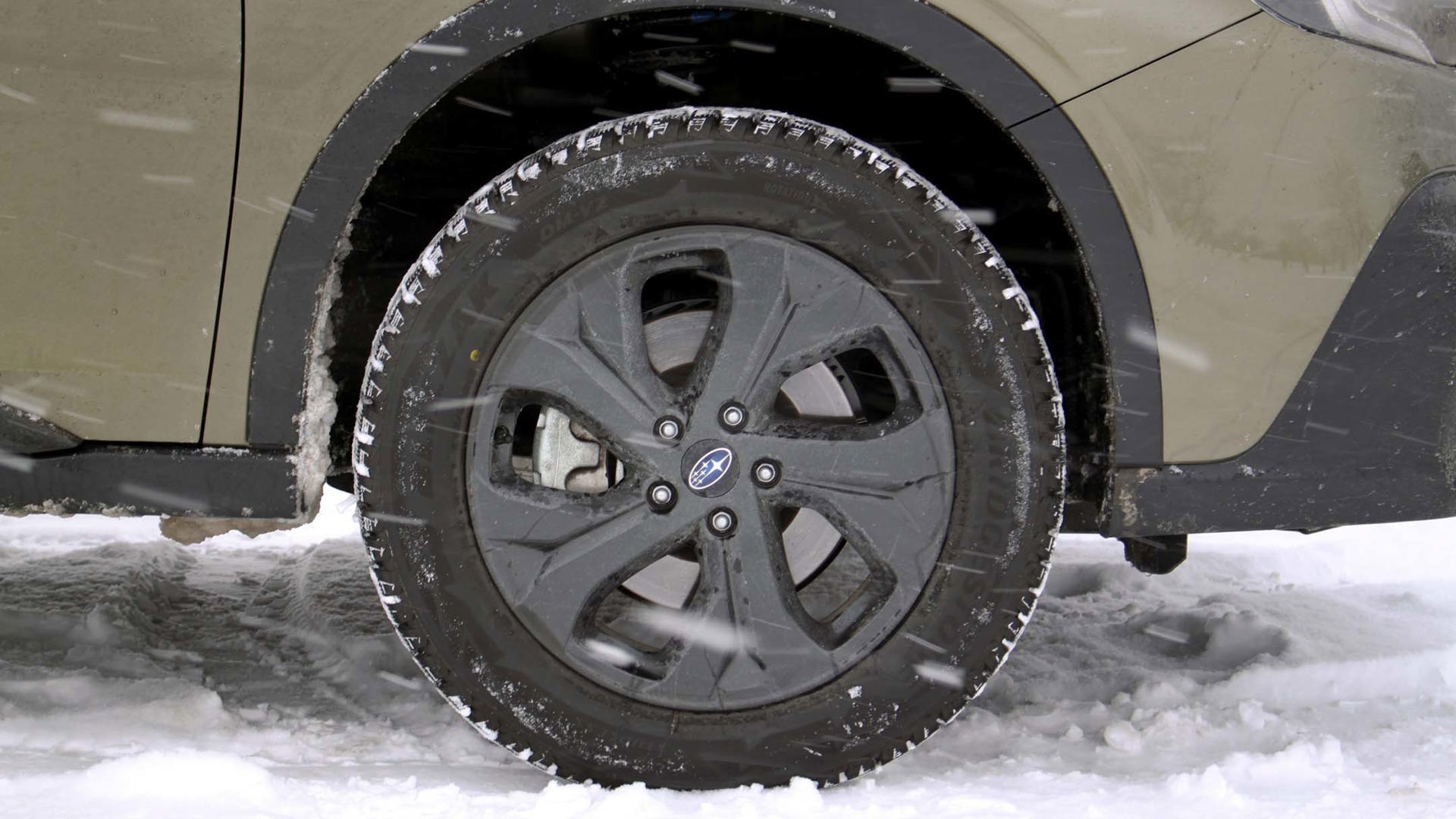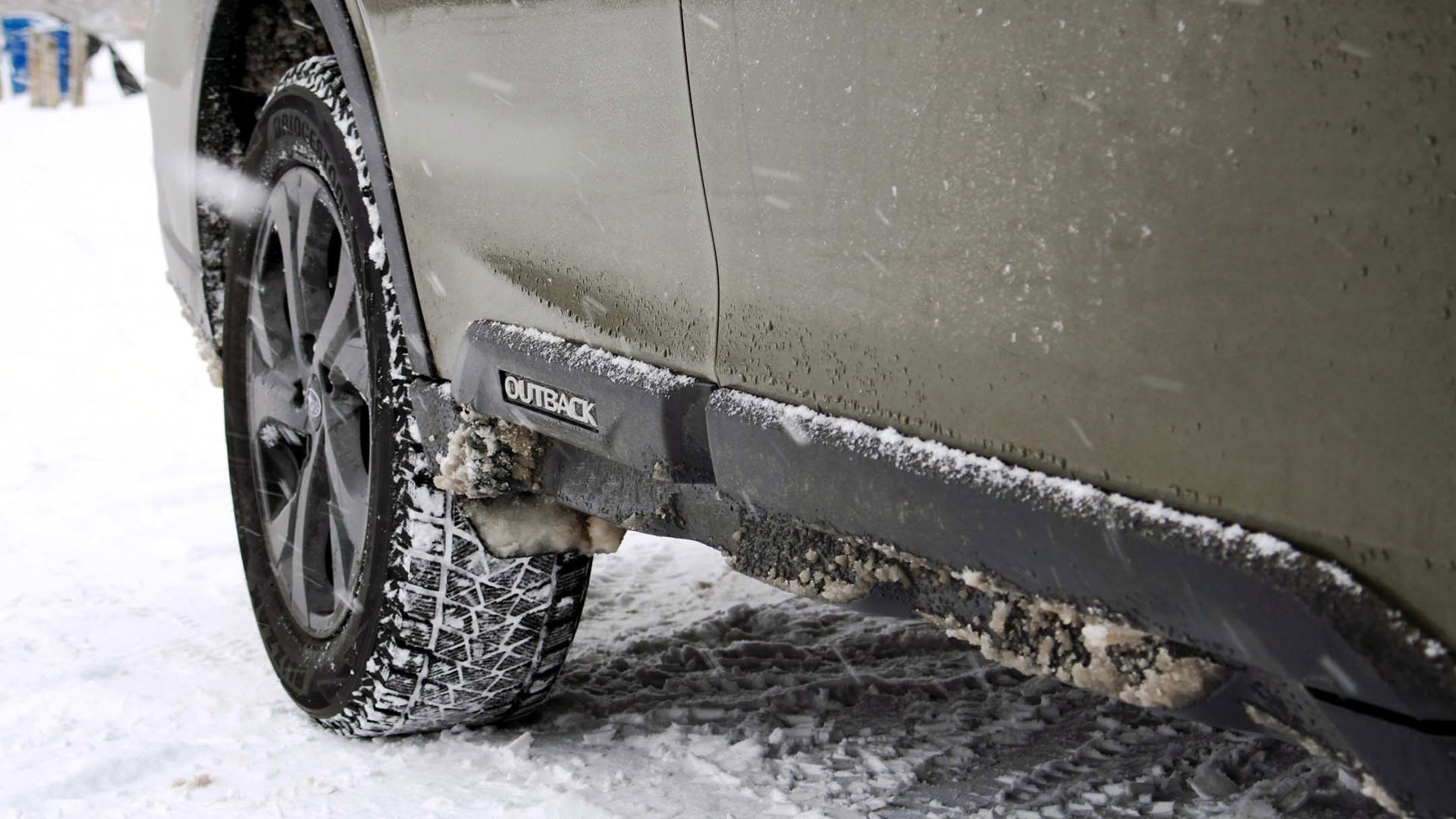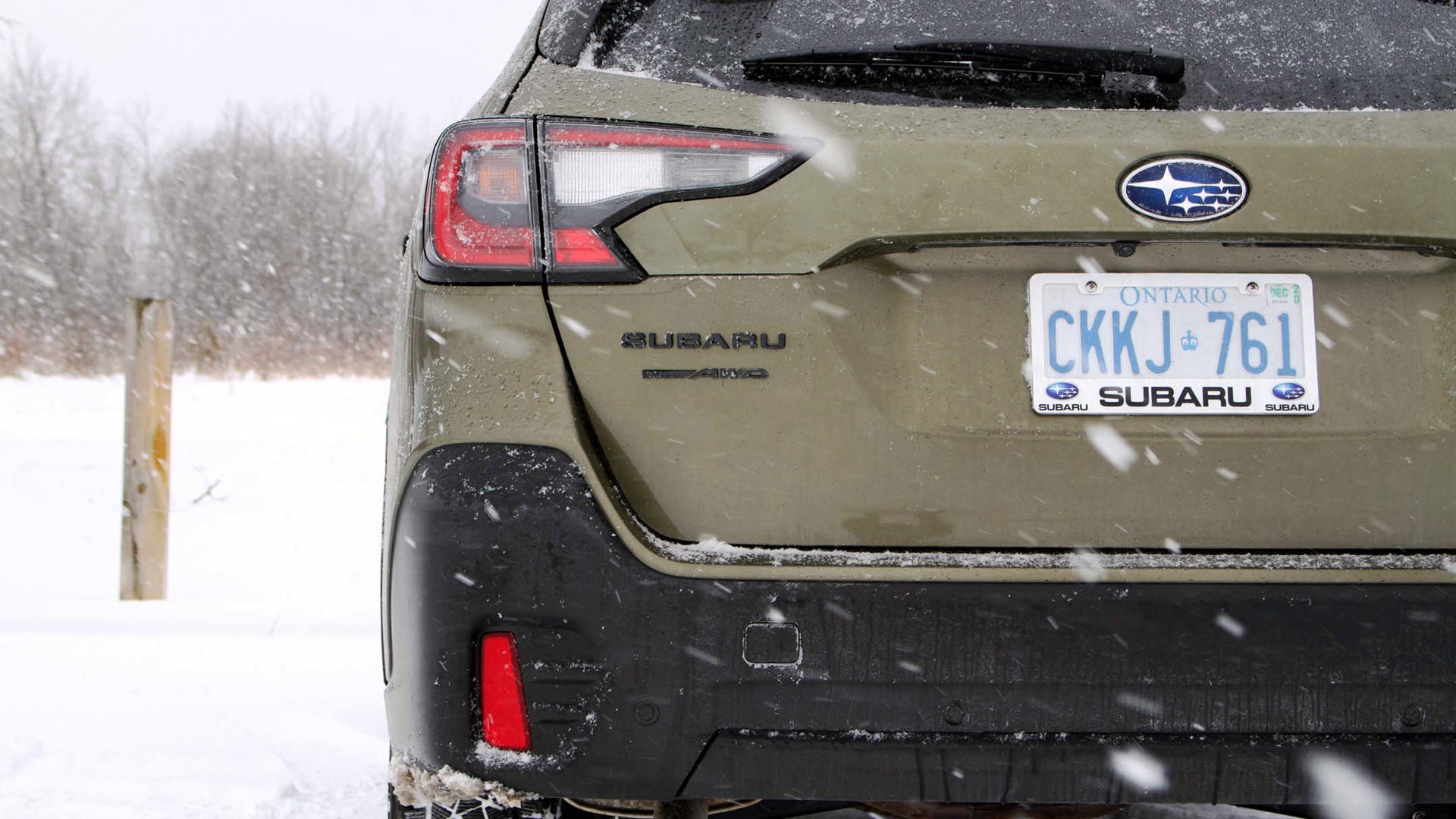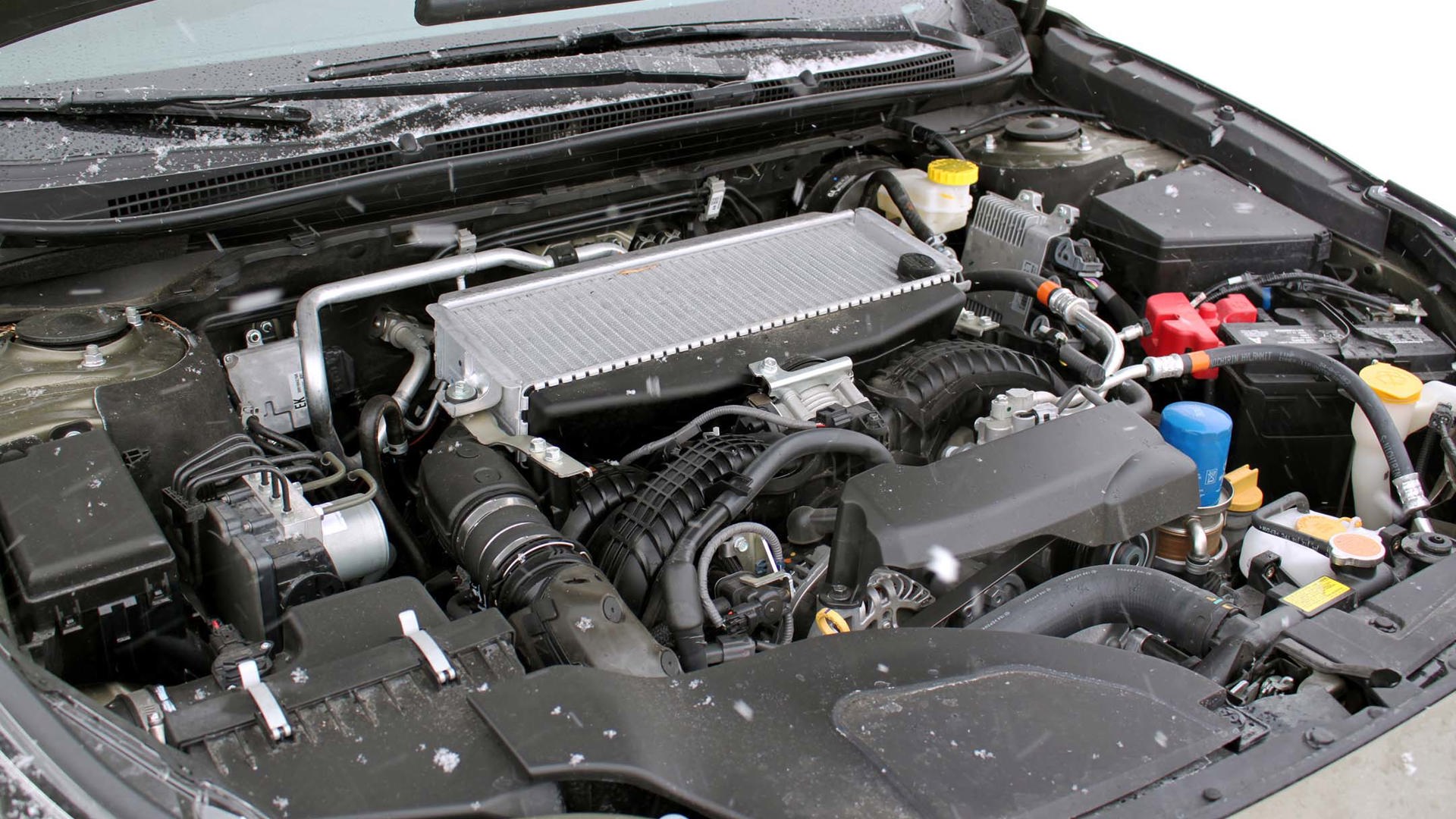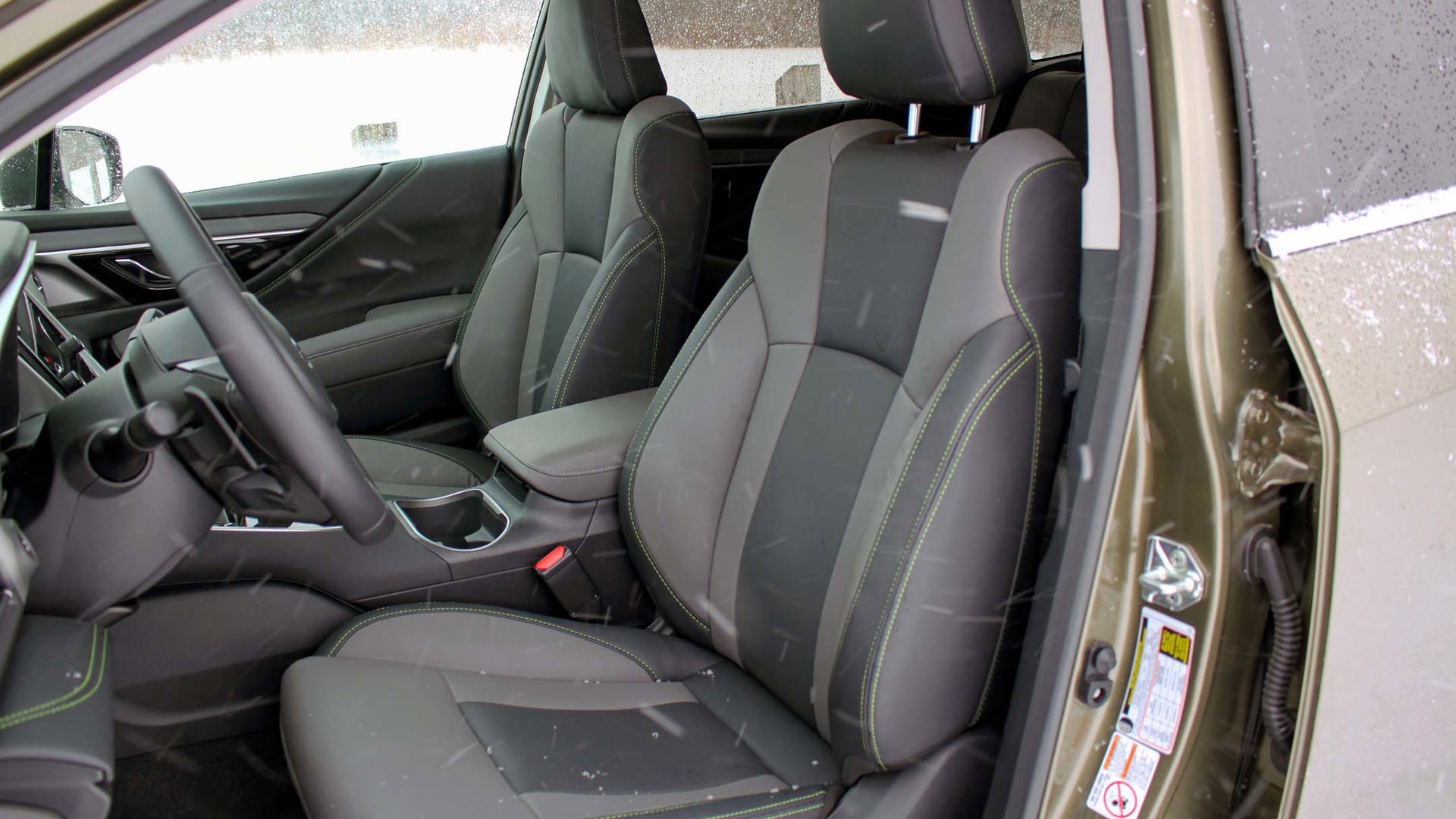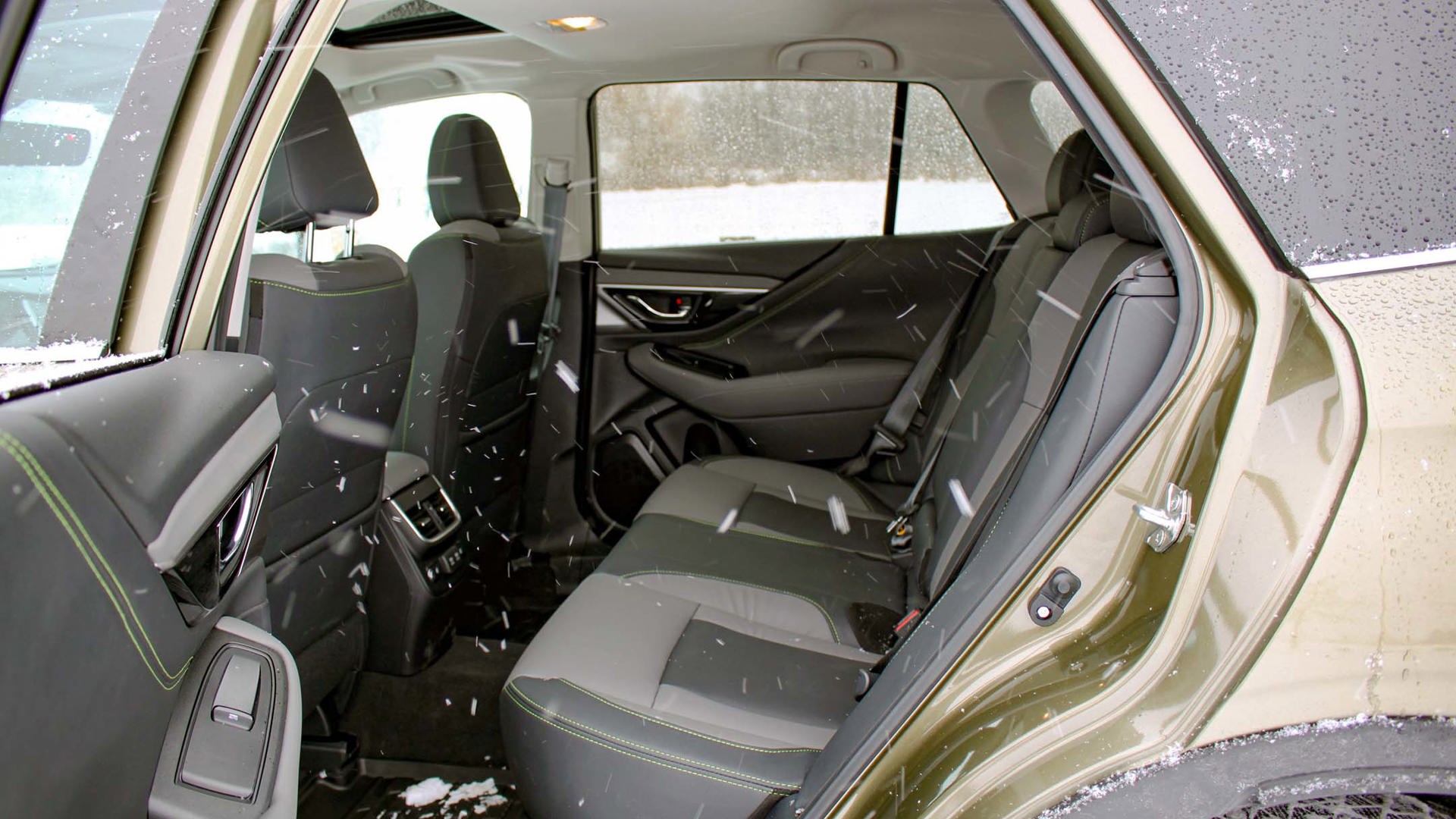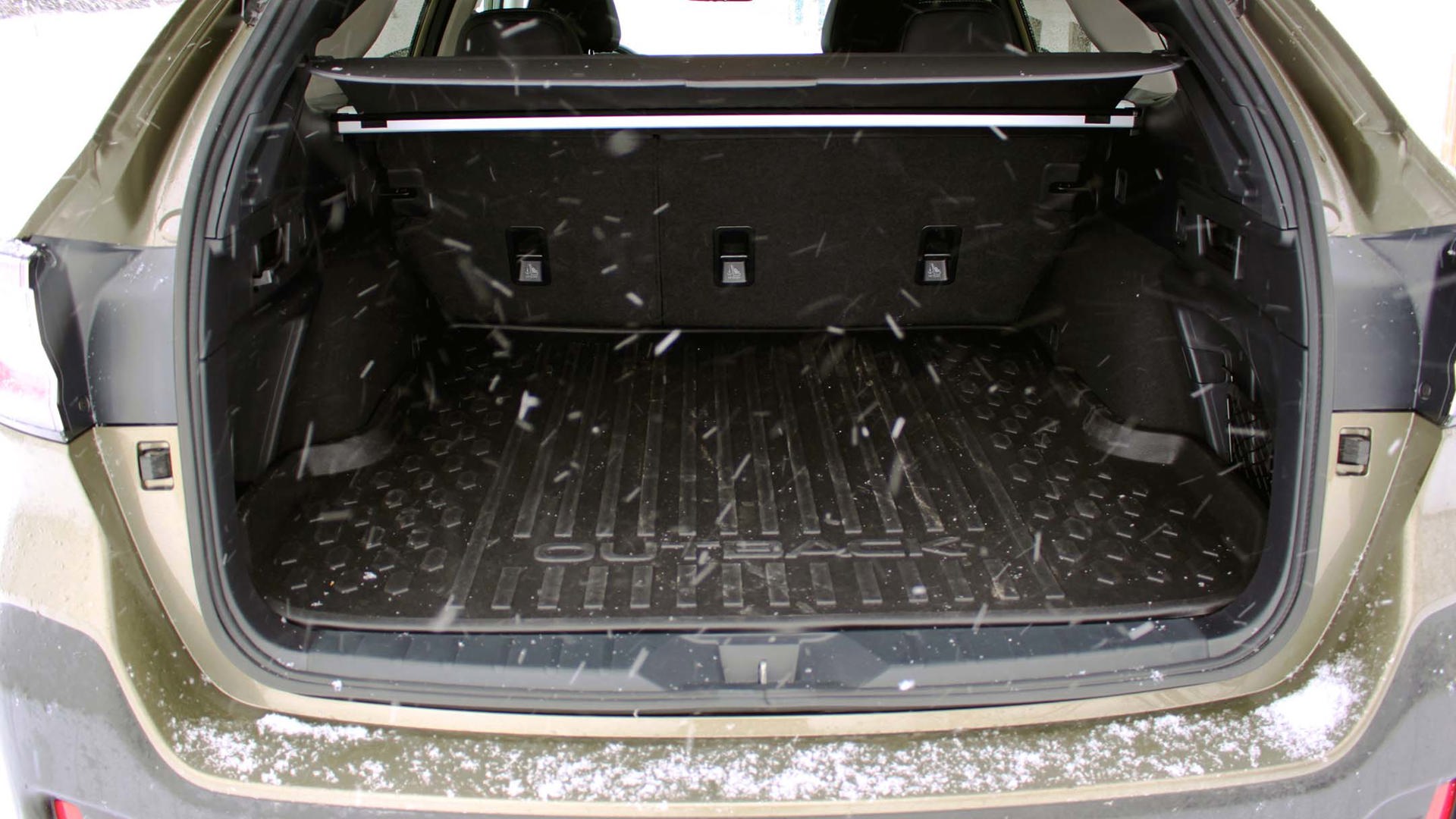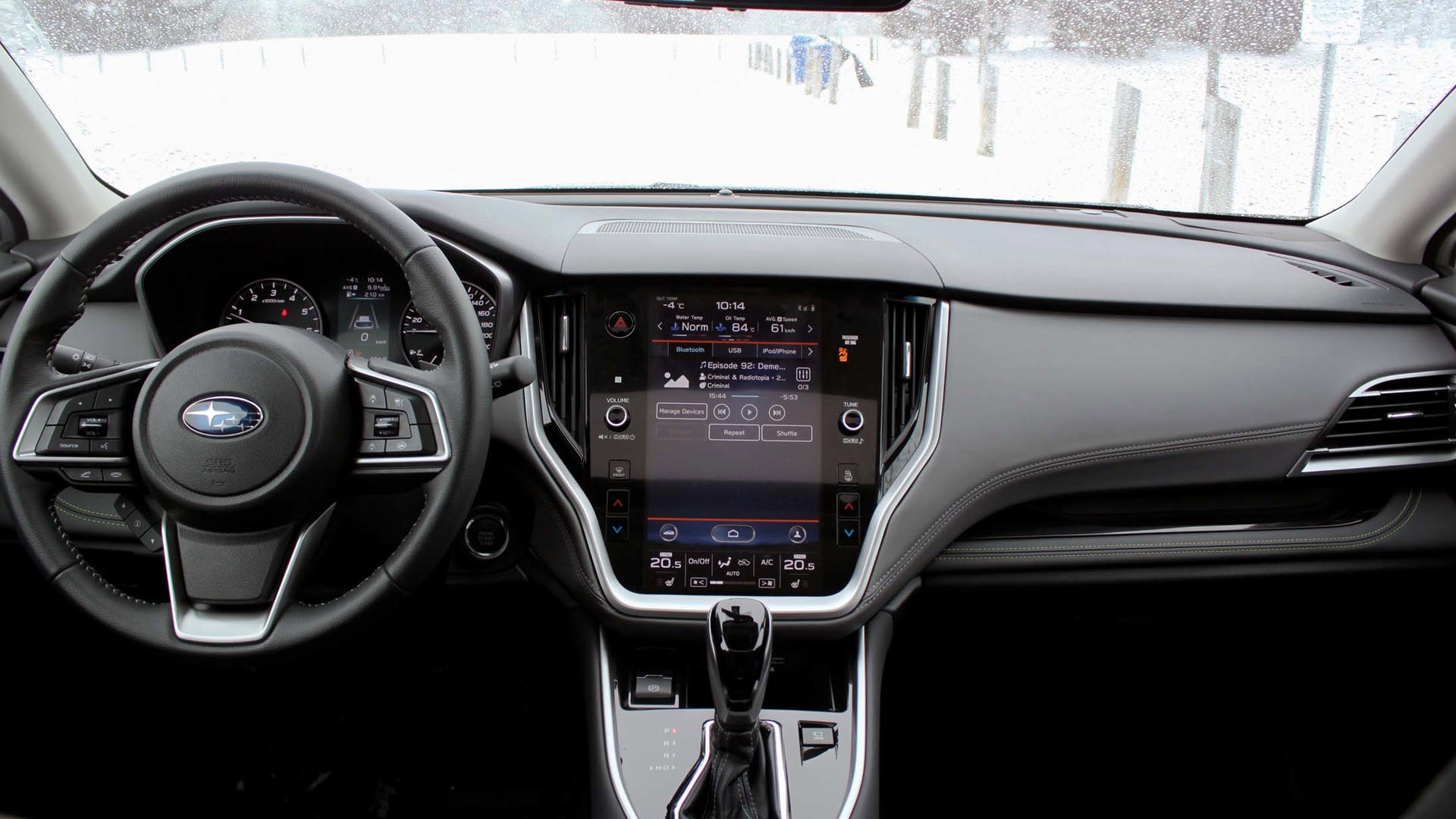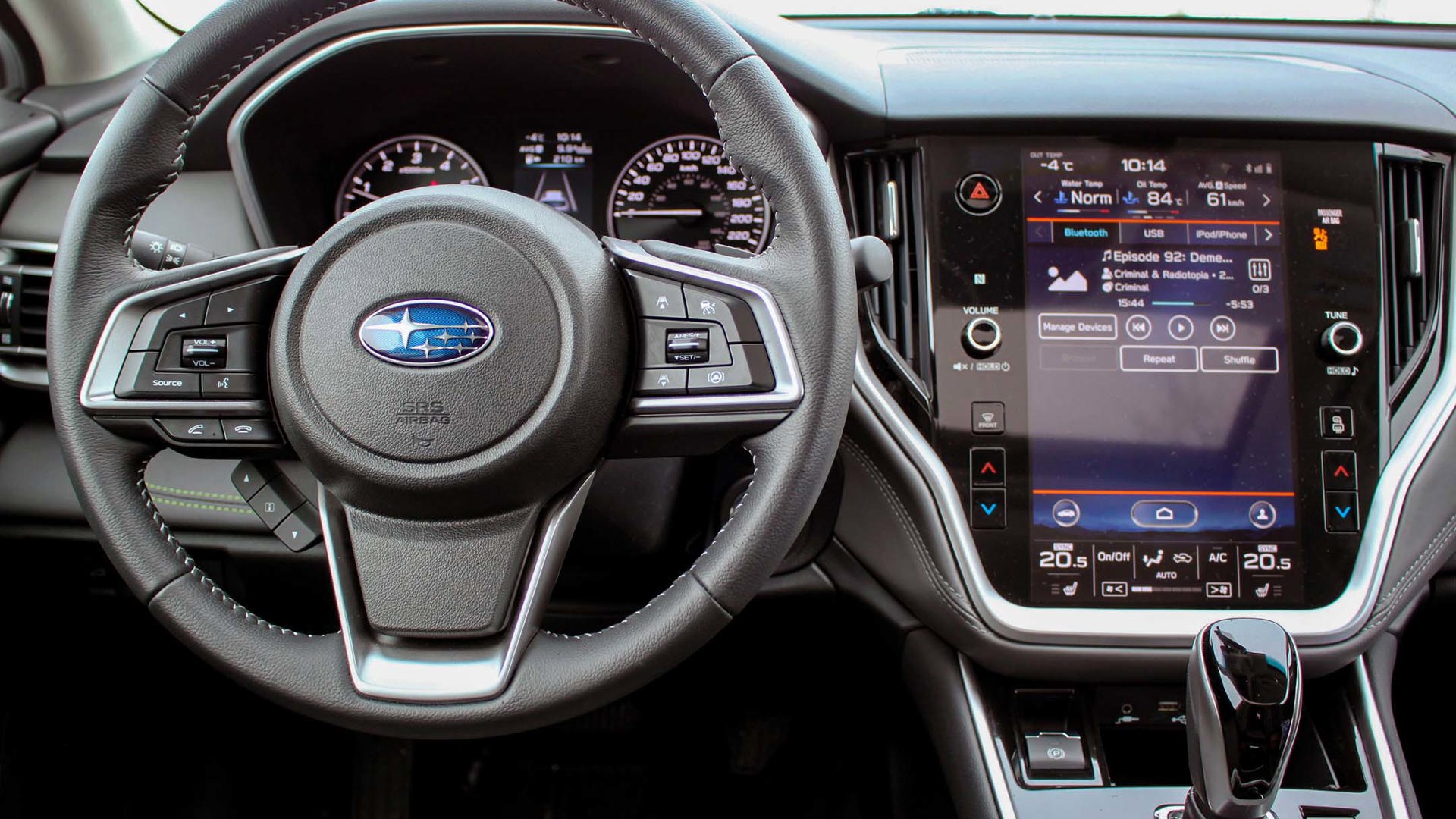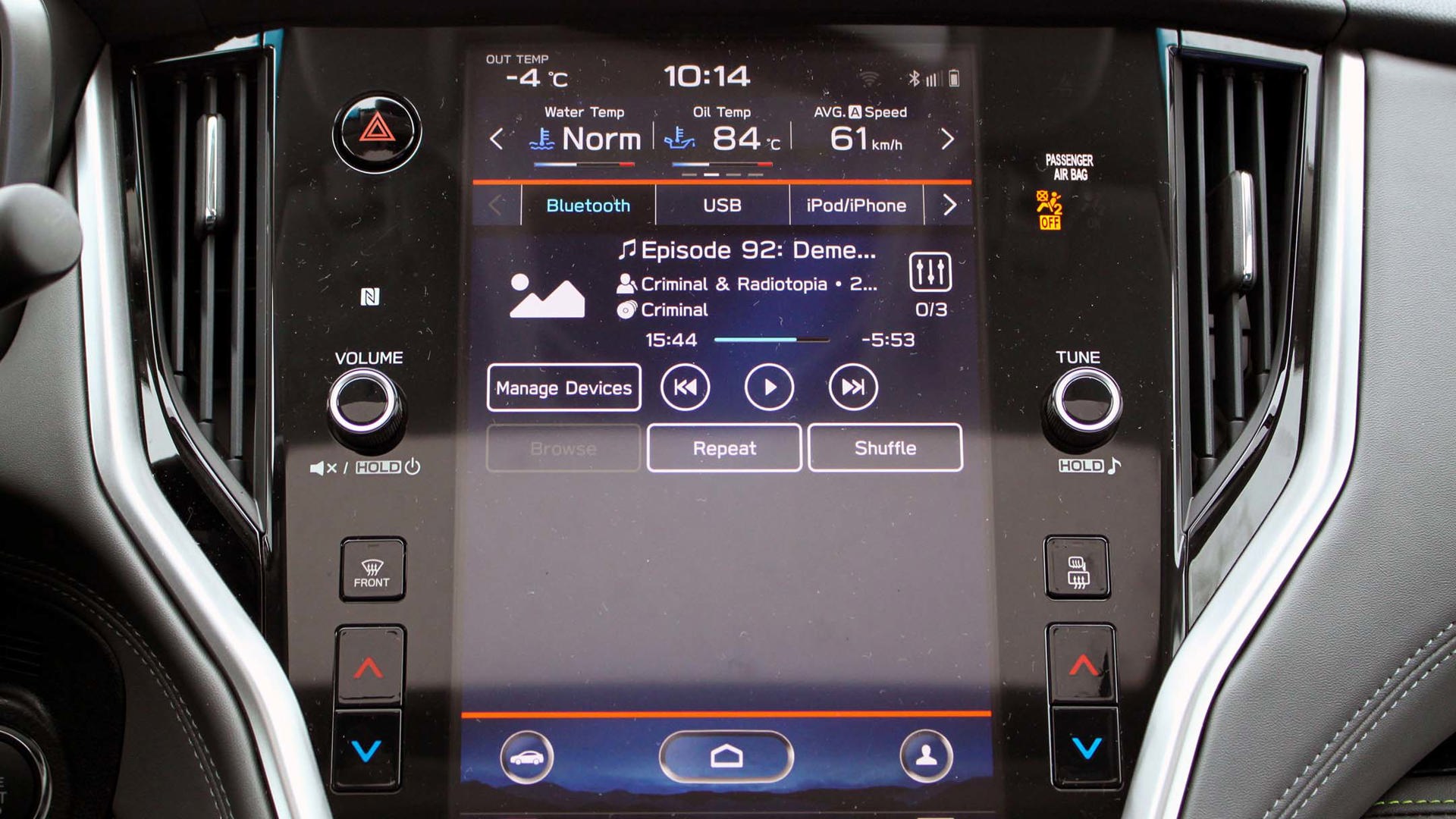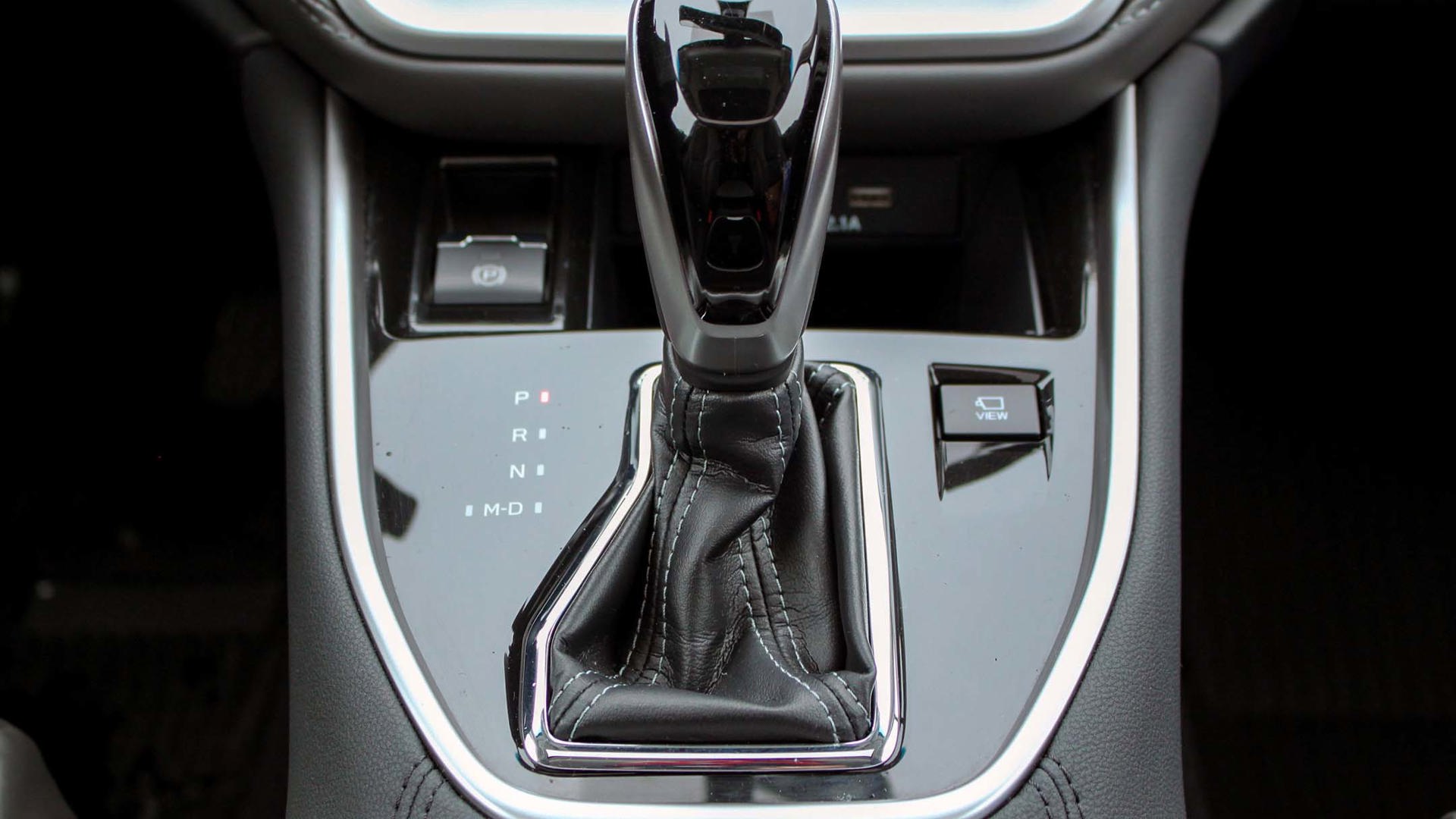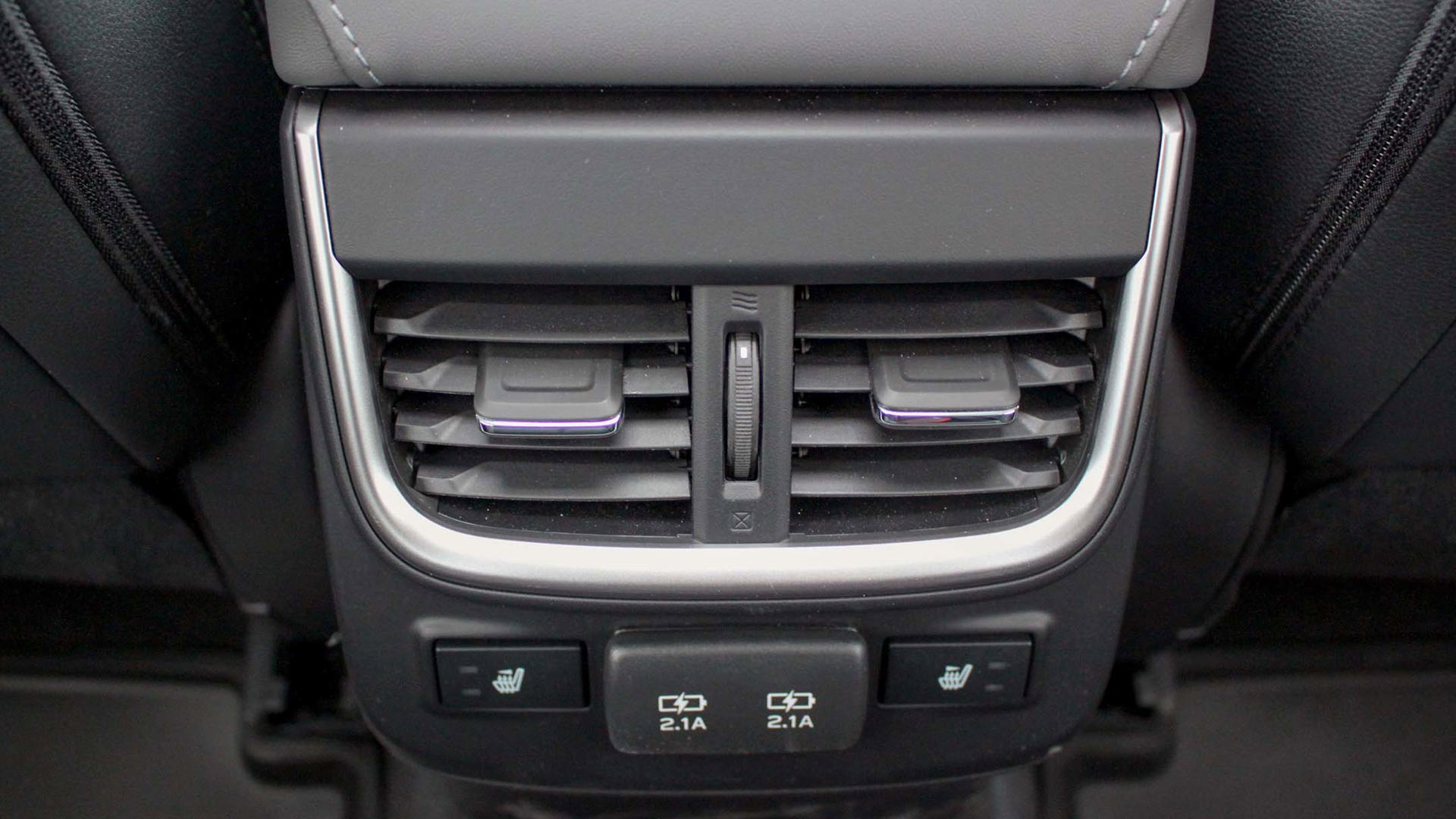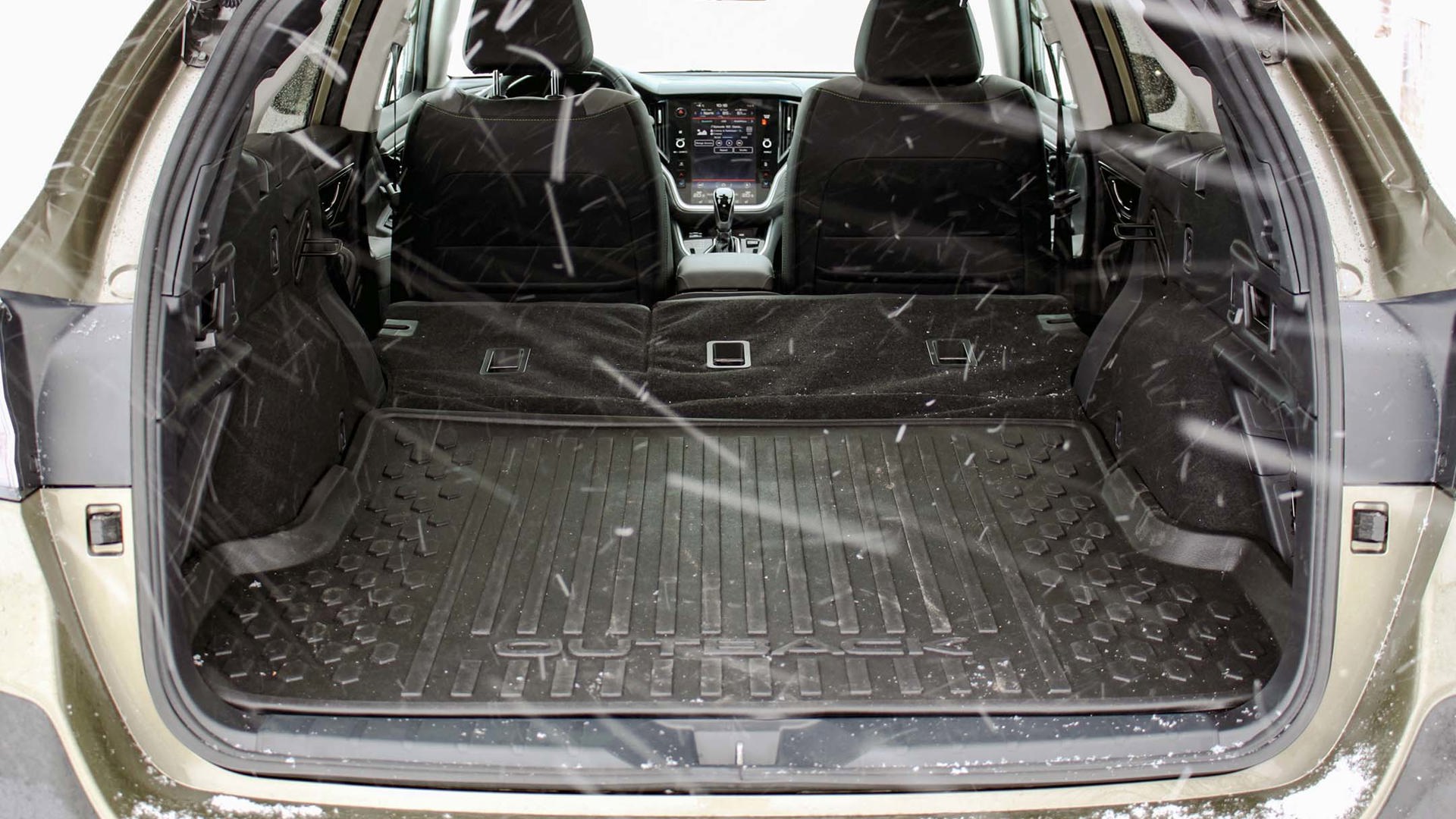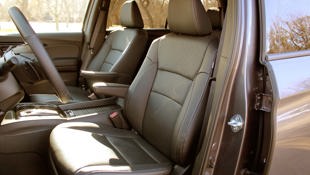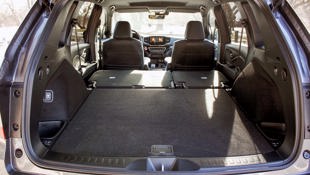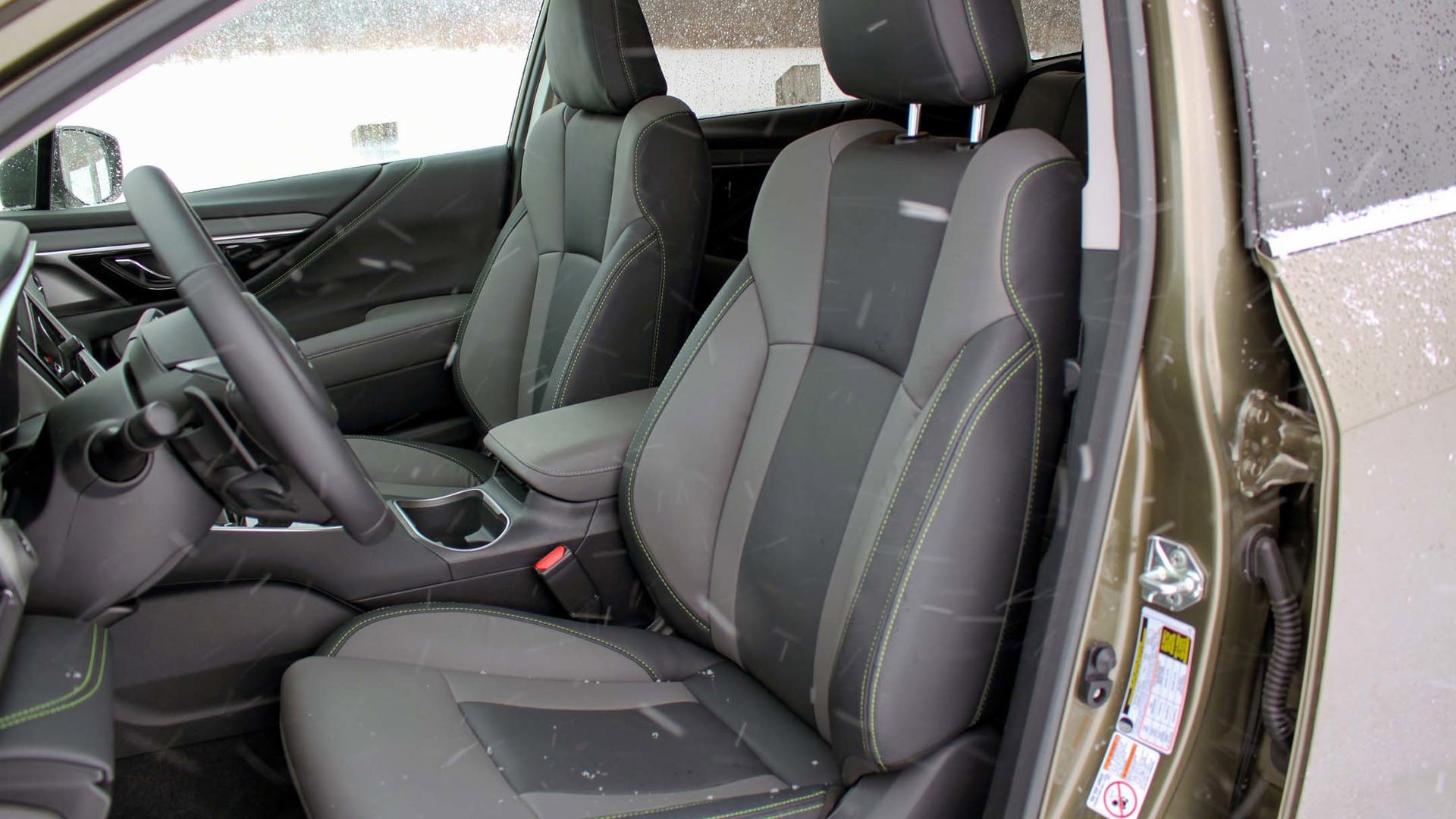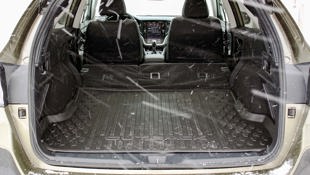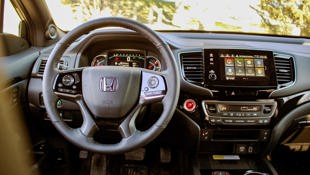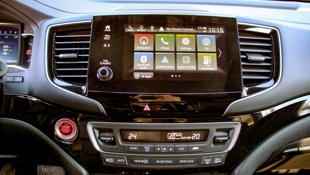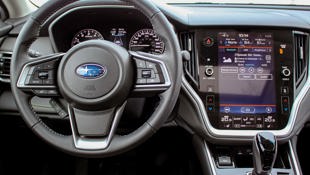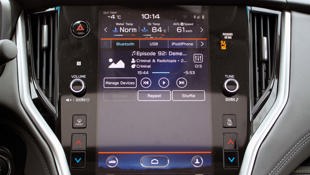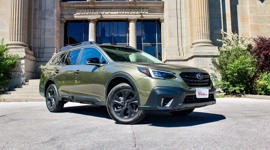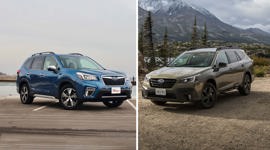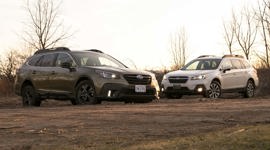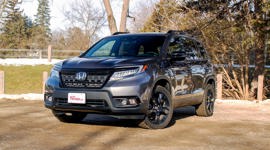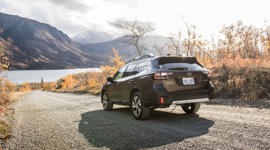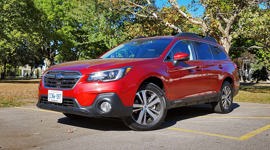Comparison Data
|
2020 Honda Passport Touring
|
2020 Subaru Outback Outdoor XT
|
|---|---|
|
Engine Displacement
3.5L
|
2.4L
|
|
Engine Cylinders
V6
|
Turbo H4
|
|
Peak Horsepower
280 hp
|
260 hp
|
|
Peak Torque
262 lb-ft
|
277 lb-ft
|
|
Fuel Economy
12.5/9.8/11.3 L/100 km cty/hwy/cmb
|
10.1/7.9/9.1 L/100 km cty/hwy/cmb
|
|
Cargo Space
1,430 / 2,852 L seats down
|
920 / 2,144 L seats down
|
|
Base Price
$49,490
|
$38,695
|
|
A/C Tax
$100
|
$100
|
|
Destination Fee
$1,815
|
$1,800
|
|
Price as Tested
$51,405
|
$40,595
|
|
Optional Equipment
None
|
None
|
The Subaru Outback and Honda Passport – two vehicles that emphasize off-road capability and ruggedness while remaining family-friendly. The Passport borrows a lot from its bigger sibling, the Pilot, while the Outback shares some of its DNA with its sedan counterpart, the Legacy.
Styling
The 2020 Outback sports Subaru’s conservative design language and hardly looks like a unique product these days. The automaker has put the same face on all of its crossovers, and where the Outback used to be a very recognizable model, it’s beginning to blend in with the Forester and Ascent. The Outdoor XT model tested here boasts blacked-out wheels and exterior trim, which makes it less anonymous.
Fortunately, the bland exterior doesn’t seep into the interior. This model has green contrast stitching, and the layout is clean – although the large central screen overwhelms the front part of the cabin. Either way, the interior of the Outback really impresses in terms of materials from the base model to the loaded Premier.
The Passport also looks derivative. Differentiating one from a Pilot, particularly at a distance, isn’t especially easy, with measures like ground clearance separating the pair (the Passport boasts 205 mm of clearance compared to the Pilot’s 185 mm). It sports the same design language found on everything from the Odyssey minivan and Ridgeline pickup, featuring a unibrow connecting the headlights. The higher ride height manages to help the Passport look more intimidating and rugged, which is a highlight.
The interior is bland and almost identical to the Pilot. While it’s spacious and airy, there are no details to be excited about and nothing that signals that you’re in anything different or unique within the Honda lineup. That’s not to say that every vehicle should stand out, but the Passport seems aimed at buyers who have a more adventurous lifestyle, and that could have been reflected with the interior.
Subaru Outback Exterior Styling: 6.5/10
Honda Passport Exterior Styling: 6.5/10
Subaru Outback Interior Styling: 7.5/10
Honda Passport Interior Styling: 6.5/10
Safety
Subaru has been racking up safety awards for years, so it should come as no surprise that the Outback earned a 2020 Top Safety Pick+ rating from the Insurance Institute for Highway Safety (IIHS). The highest rating a vehicle can earn, the Outback’s award comes not just from its excellent crash test scores, but also from its bright headlights and standard crash avoidance systems.
Subaru’s EyeSight advanced safety suite has been around for almost a decade now, and it uses two cameras at the top of the windshield to detect objects in front of the vehicle. Those cameras also form the basis of its adaptive cruise control system, which now keeps the Outback centred in its lane. It works well overall, although obscured lane markings render the lane-centring function useless without another vehicle in front for the Outback to follow.
The full list of advanced safety equipment offered on the Outback includes adaptive cruise control, lane-keep assist, blind-spot monitoring, automatic emergency braking, rear cross-traffic alert, and automatic high-beams, as well as steering-responsive headlights.
The Passport is no slouch when it comes to safety features, though it received a Top Safety Pick rating from the IIHS. That’s despite the long list of safety equipment, including a forward-collision warning system, lane-departure warning, lane-keeping assistance, and adaptive cruise control.
Some models use Honda’s blind-spot monitoring system that displays a video feed of what’s happening on the passenger side of the vehicle, while other vehicles have a full-fledged sensor-based blind-spot monitor. It’s also worth pointing out that the Passport’s adaptive cruise control system doesn’t operate at all speeds, giving the Outback even more of an advantage here.
Subaru Outback Safety: 9/10
Honda Passport Safety: 7.5/10
Practicality
The Passport holds a pretty good advantage in the practicality department, a by-product of being so closely related to the three-row Pilot. A full 1,430 L of cargo space is found behind the rear seats, and there’s a helpful storage cubby beneath the Passport’s cargo floor for extra equipment. Fold the rear seats down and you get a total of 2,854 L which also one-ups the Subaru. The interior of the Passport is full of helpful shelves and deep cubbies, furthering the appeal of the Passport. It’s a storage locker with wheels and an engine.
The Outback falls behind significantly here, with just 920 L of storage behind the rear seats and 2,144 L when they’re folded down. There are other practical pleasantries here though, like the standard roof rack that features built-in crossbars that stow in the roof rails until they’re needed. The roof rails also feature tie-downs, and the rear door sills feature steps for better access to the roof. The Passport holds an edge over the Outback when it comes to towing, with a maximum capacity of 2,268 kg (5,000 lb) compared to 1,588 kg (3,500 lb).
Subaru Outback Practicality: 7.5/10
Honda Passport Practicality: 10/10
User Friendliness
When it comes to the user experience, the two crossovers take dramatically different approaches. The Outback hides all of its buttons in the large vertical touchscreen that dominates the dashboard. It’s a responsive screen, but the way the information is laid out could be improved. There are different fonts and a few too many sub-menus, and doing things like changing HVAC settings sometimes feels a bit too complicated in comparison to the simpler process in the Passport.
It’s nice that the Outback features Android Auto and Apple CarPlay support, but that’s becoming standard practice these days. A positive note involves the large windows and generous visibility, including the available front camera display that helps when maneuvering the Outback in tight spots. The Passport uses far more tactile buttons, so it is a bit more user-friendly, but it features a smaller infotainment display. The system works, but it’s nothing flashy. The same can be said about the gauge cluster, which is small and unattractive but gets the job done.
Subaru Outback User Friendliness: 7.5/10
Honda Passport User Friendliness: 8/10
Features
These two SUVs can be equipped with a generous amount of features and technology. The Outback can add ventilation to its standard heated front seats, a heated steering wheel, heated rear seats, dual-zone automatic climate control, and a 12-speaker sound system. The Passport has a few more features, including a wireless phone charging pad, rear climate control, rain-sensing wipers, and a Wi-Fi hotspot.
Subaru Outback Features: 7.5/10
Honda Passport Features: 8.5/10
Power
The Outback is offered with two engines: A 2.5L flat four-cylinder engine that makes 182 hp and 178 lb-ft of torque, or a 2.4L turbocharged flat-four that makes 260 hp and 277 lb-ft of torque. Power gets sent to all four wheels via a continuously variable transmission (CVT), which is refined and responsive as far as this type of transmission goes. The 2.4L turbo is the more exciting choice of the two motors and makes the Outback feel far more exciting and interesting to drive. It’s one of the highlights of the Outback and makes commuting and road trip duties anything but a chore.
The Passport uses a 3.5L V6 engine that makes 280 hp and 262 lb-ft of torque. That motor is paired to a nine-speed automatic transmission that is sometimes a bit sluggish to get into drive or reverse, but is otherwise fine. There’s a good helping of extra power in the Passport, and the nine speeds help the vehicle feel quicker than its size would indicate. The all-wheel drive system in the Passport is pretty robust, though it’s not a full-time system like the Outback’s.
Subaru Outback Powertrain: 9/10
Honda Passport Powertrain: 8/10
Comfort
Both SUVs are spacious and far from penalty boxes to drive around in but have different behaviours on the road. The Passport can sometimes pitch forward and backwards under heavy acceleration and braking, while the Outback feels much more stable and refined. The Honda has a significant amount of wind noise as well, while the Outback doesn’t suffer from this as much. Both vehicles can tackle rough roads and poor road conditions pretty easily. The Outback’s suspension is a tiny bit stiffer than the Passport’s, but it never impacted the ride quality negatively during testing.
Subaru Outback Comfort: 8/10
Honda Passport Comfort: 6.5/10
Driving Feel
The Outback borrows its driving style from Subaru’s Legacy sedan rather than the three-row Ascent. That’s an advantage, resulting in a responsive and engaging drive, especially when equipped with the 2.4L turbo. The light steering is the biggest worry, as the Outback can feel a bit numb at times.
What stands out most about the Passport while driving is its size. It’s about 200 kg heavier than the Outback, and it doesn’t change directions nearly as quickly. It leans and never feels overly engaging. This is where Honda’s strategy to use the Pilot as the starting point for the Passport shows its disadvantages.
Subaru Outback Driving Feel: 8/10
Honda Passport Driving Feel: 6.5/10
Fuel Economy
Outbacks that are equipped with the naturally aspirated 2.5L engine are expected to consume 9.0 L/100 km in the city, 7.1 on the highway, and 8.2 combined, while turbocharged models are rated for 10.1 in the city, 7.9 highway, and 9.1 combined.
The Passport is far less efficient, at 12.5 L/100 km in the city, 9.8 on the highway, and 11.3 combined.
Subaru Outback Fuel Economy: 9/10
Honda Passport Fuel Economy: 7/10
Value
Due to the many available trim levels and two engine choices, the Subaru packs a much lower starting price than the Passport. You can get into an Outback with the base engine for just $32,595 including freight and other fees, while a fully loaded model with the turbocharged engine is $45,695 before tax.
The Passport starts at $44,405 with freight and fees and tops out at $51,405, so it skews closer to the price of the turbocharged models. It’s worth pointing out that the Honda has more power, space and a few more features, but it also consumes more fuel.
Subaru Outback Value: 8/10
Honda Passport Value: 7/10
The Verdict
These two vehicles fill an important space in each automaker’s lineup, and the Outback represents the true essence of the outdoor-loving Subaru. The Honda Passport successfully invades that space, although it does feel a bit bland and less distinct thanks to its similarities to the Pilot. That said, it’s very practical, spacious, and full of features, which makes it an ideal pick in this segment. However, buyers looking for the more engaging drive will likely prefer the Outback – and they’ll save a bit more money in the process.
